- Performance boost from PHEV drivetrain
- Feels lighter on its feet than other PHEVs
- Slick integration of technology
- Slow charging speeds limits practicality
- Battery has reduced practicality from the regular Q5
- Some interior plastics don't feel $100k+
As the world slowly switches to electrification, new car buyers have increasingly electrified options available to them. Take plug-in hybrids, for example. Seen as the stepping stone from ICE to electric power, PHEVs combine the best of both worlds: electric power for up to 60km (depending on the car) and a long range once the battery has run out. They’re billed as the perfect solution for many Australians looking to reduce their fuel bills, and Audi is one company that’s just launched a new PHEV model. Is the 2023 Audi Q5 55 TFSI e the best of the PHEV bunch? Let’s find out.
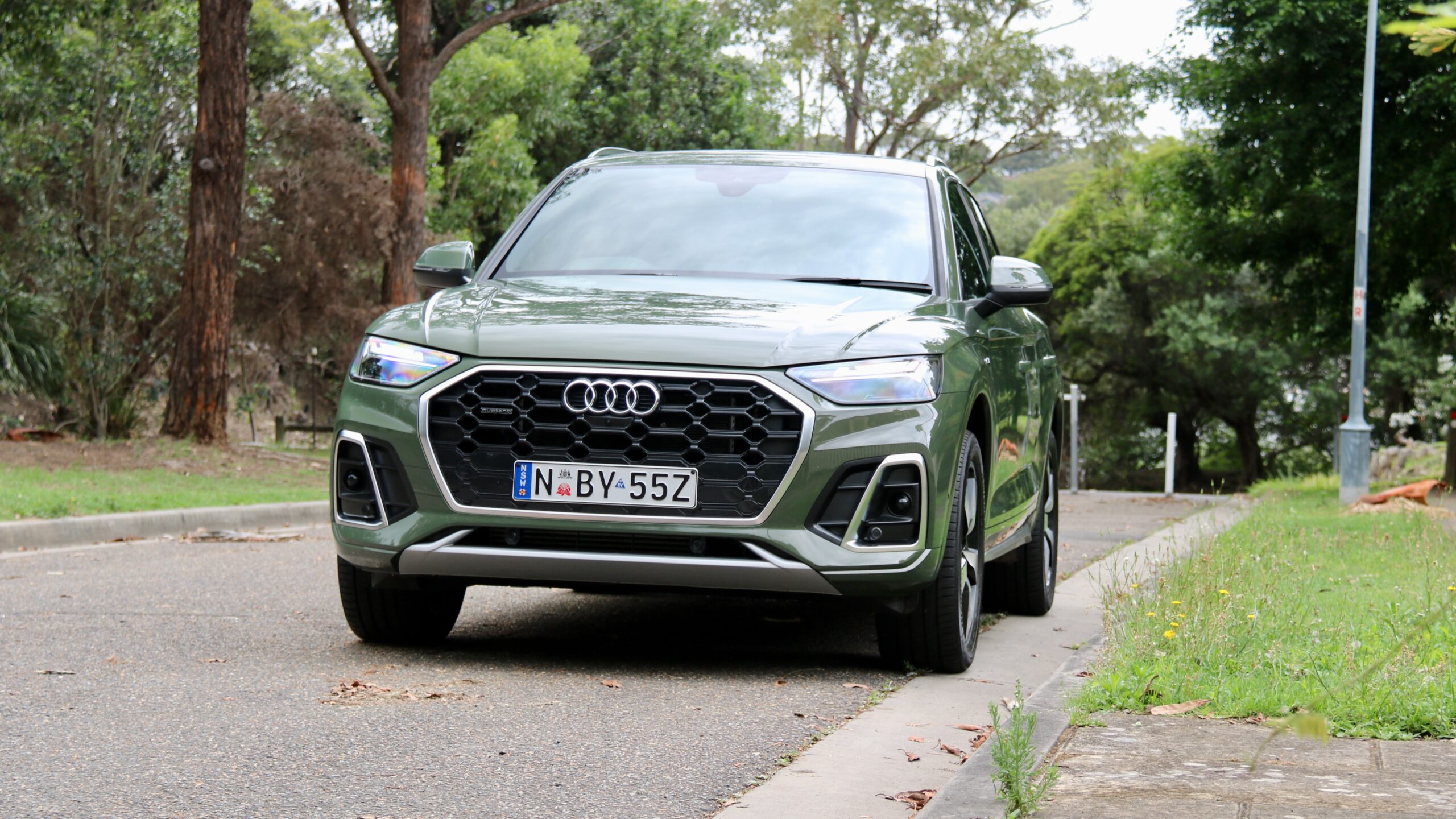
While the Q5 55 TFSI e is a new model to Australia, it’s actually been sold in some overseas markets since 2019 and while some may question Audi dabbling in the technology in 2023, it actually launched both the A3 e-tron and Q7 e-tron – its first plug-in hybrids before the e-tron badge meant EV – into Australia as far back as 2016 and has confirmed the larger Q8 60 TFSI e for local sales soon. It’s clear that Audi Australia is trying to offer as many powertrain options as it can for the Q5, increasing its versatility – why choose the 55 TFSI e?
Price & Equipment: 7.5/10
The 2024 Audi Q5 55 TFSI e is a new plug-in hybrid variant that was recently added to the Q5 lineup and it sits above the existing Q5 45 TFSI Sport. Priced from $102,900 plus on-road costs – or around $115,000 drive away – the 55 TFSI e sits at the top of the regular Audi Q5 range, but underneath the performance-oriented SQ5. Opting for the coupe-like Sportback bodystyle increases the price to $110,200 +ORC and also adds features like Nappa leather upholstery, Matrix headlights and brushed aluminium inlays.
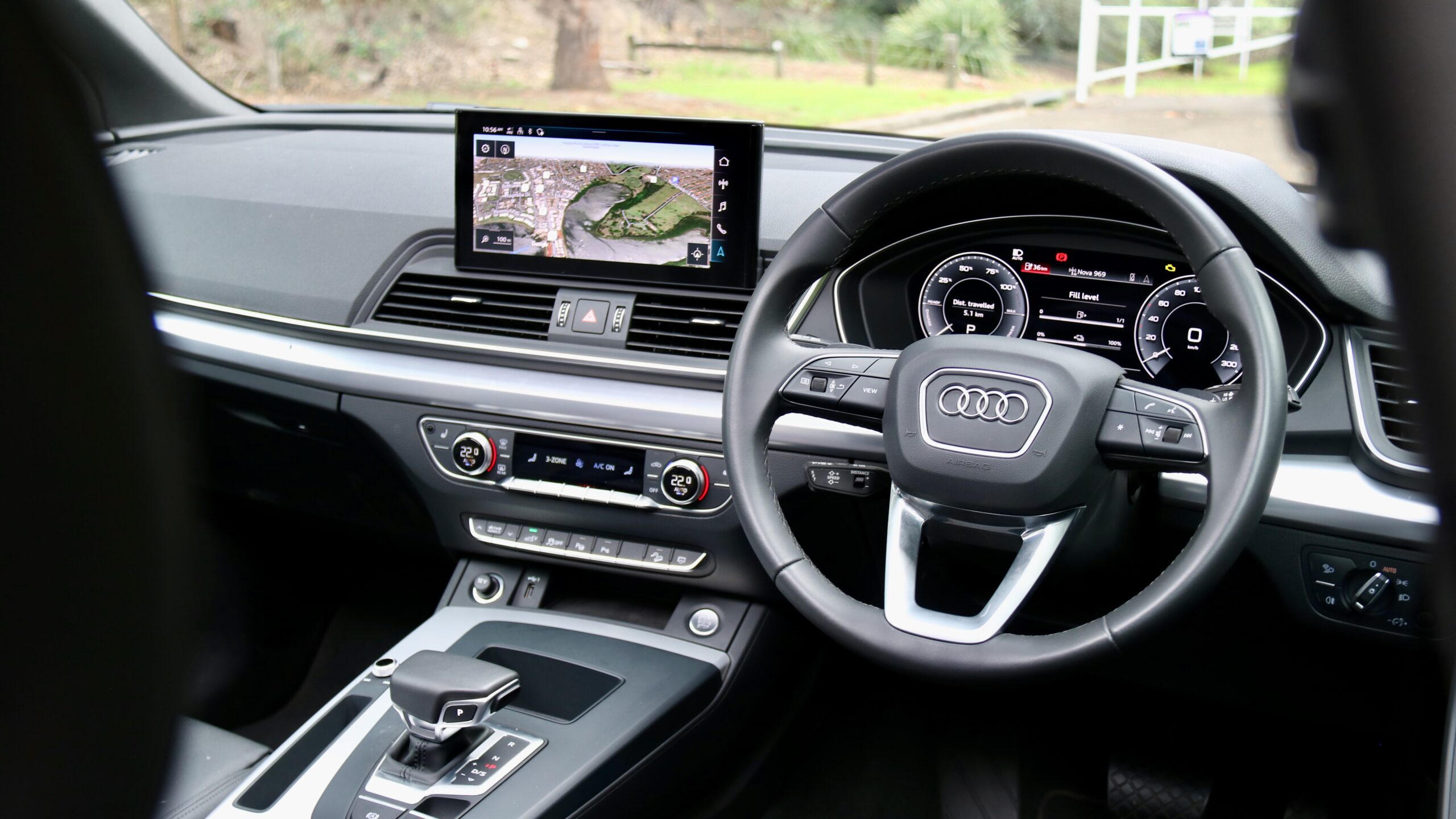
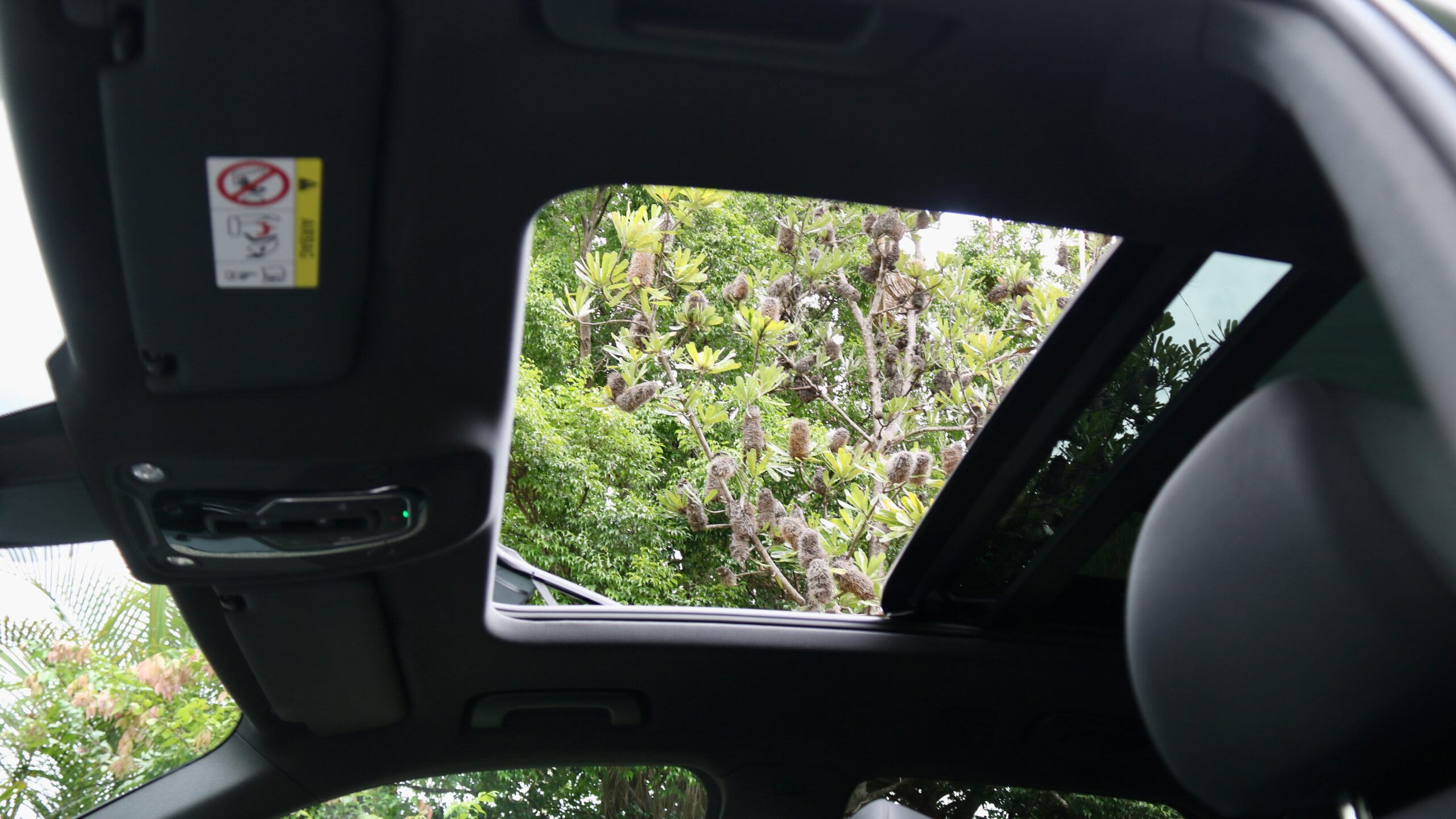
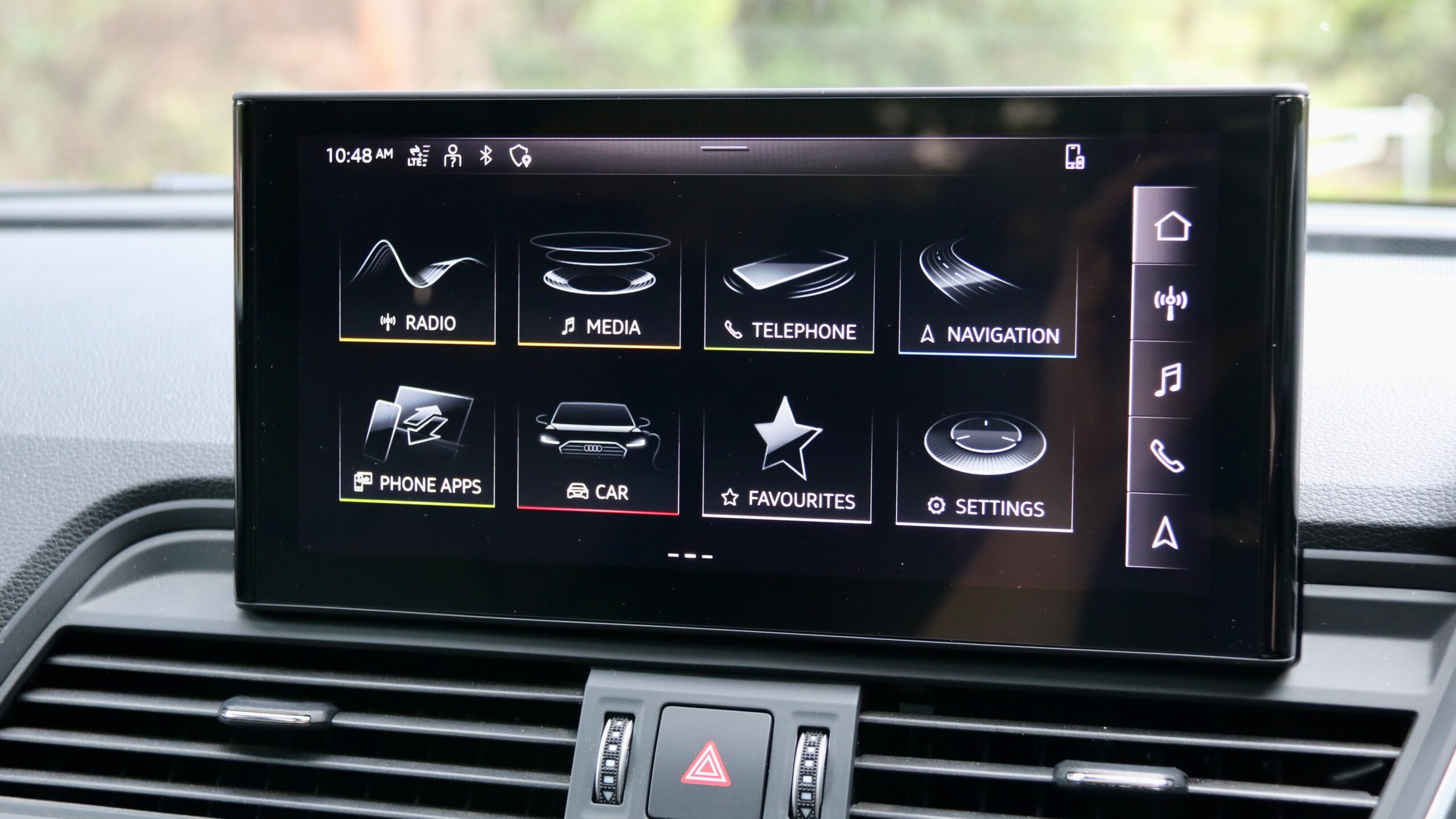
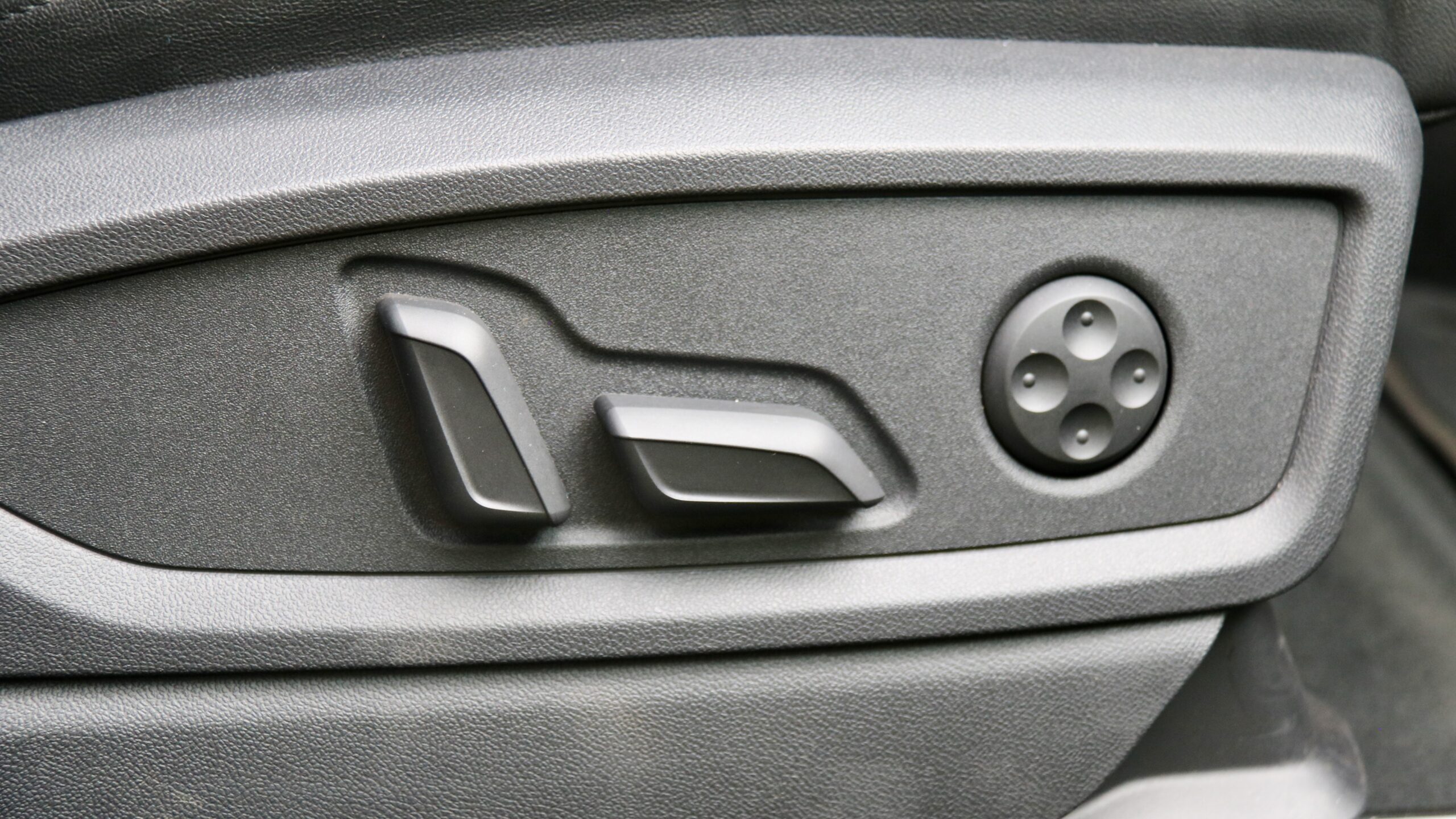
2023 Audi Q5 55 TFSI e standard equipment:
- 20-inch alloy wheels with a tyre repair kit
- Dusk- and rain-sensing automatic LED exterior lighting with LED front daytime running lights
- Aluminium roof rails
- Automatic wipers
- Panoramic sunroof with a power sunshade
- Leather upholstery with a leather steering wheel and gear selector
- 14-way power adjustable front seats with two-position memory for the driver
- Heated front seats
- Tri-zone automatic climate control
- 10.1-inch touchscreen with Audi’s ‘MMI’ software and online services
- Wireless Apple CarPlay and Android Auto
- AM/FM/DAB+ digital radio
- 12.3-inch digital driver’s display
- 180-watt 10-speaker sound system
- 30-colour LED ambient lighting
- Wireless smart phone charger
- Selectable driving modes (Auto, Comfort, Dynamic and Individual)
- EV drive settings (Hybrid, Hold, Charge and EV)
- Rear privacy glass
- Keyless entry with push button start
- Auto-dimming rear view mirror
- Heated and auto-folding exterior mirrors
- Electric parking brake with auto hold
- 3x USB-A ports and 1xUSB-C port
- Type 2 to type 2 charging cable
- Type 2 to wall socket charging cable
2023 Audi Q5 55 TFSI e safety equipment:
- Eight airbags
- Autonomous Emergency Braking (AEB) with pedestrian detection and intersection assist
- Forward collision alert
- Auto emergency steering
- Low-speed automatic reverse braking
- Lane departure warning
- Lane keep assist
- Blind-spot monitoring with rear-cross traffic alert
- Adaptive cruise control with traffic jam assist
- Rear occupant alert
- Safe exit assist
- Auto high beam
- Tyre pressure monitoring
- Front and rear parking sensors
- Automatic parking
- 360-degree parking camera
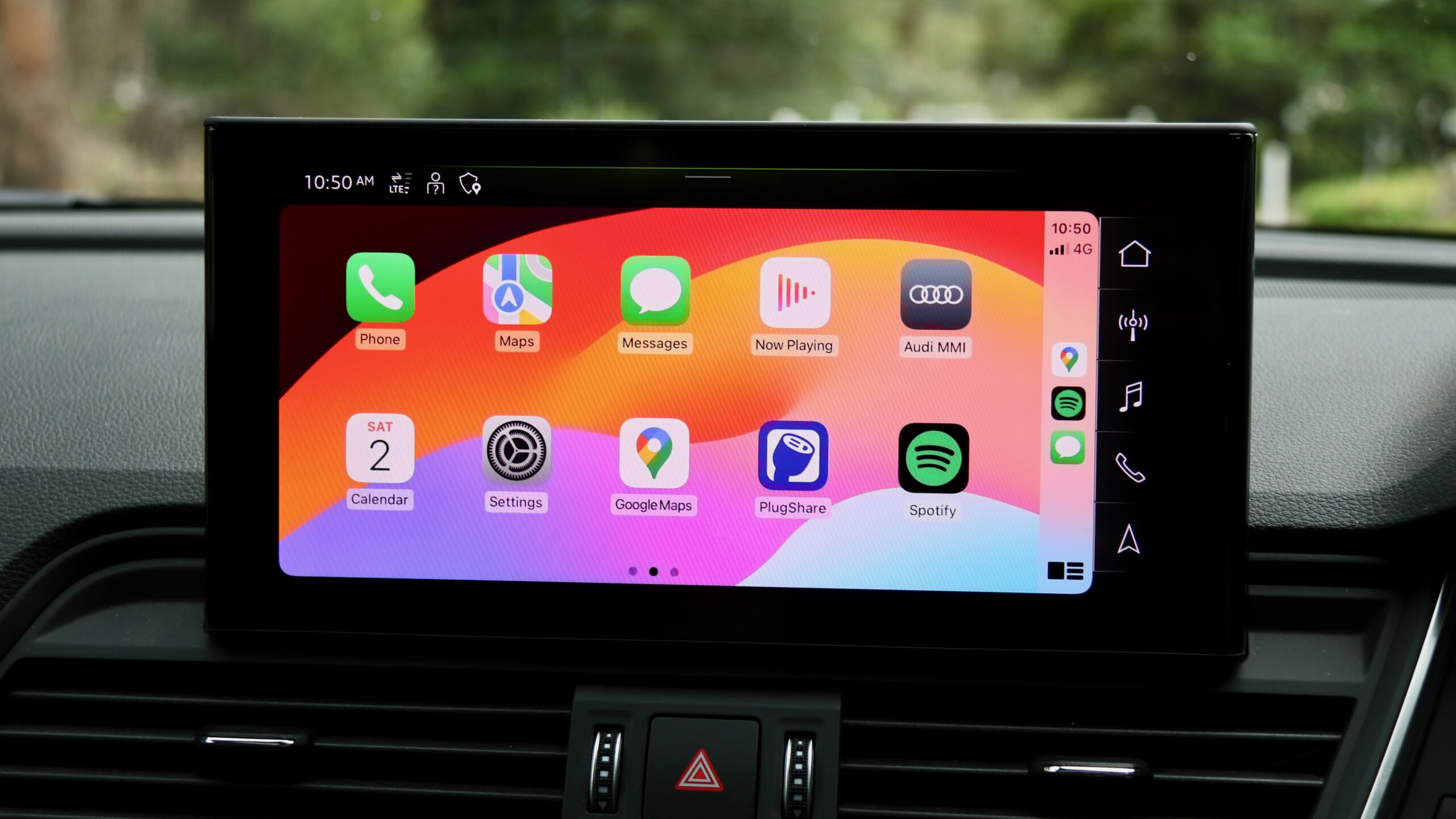
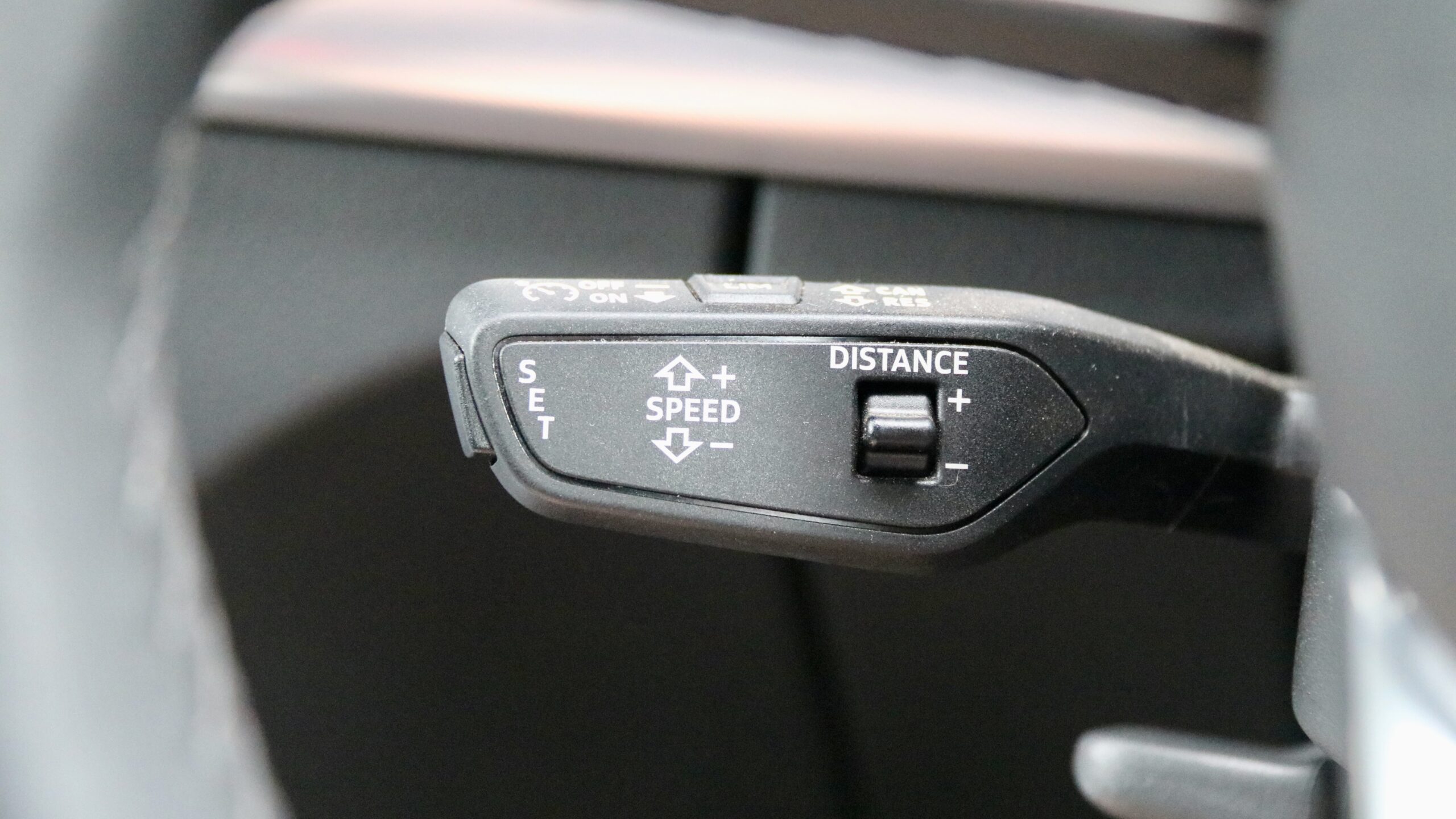
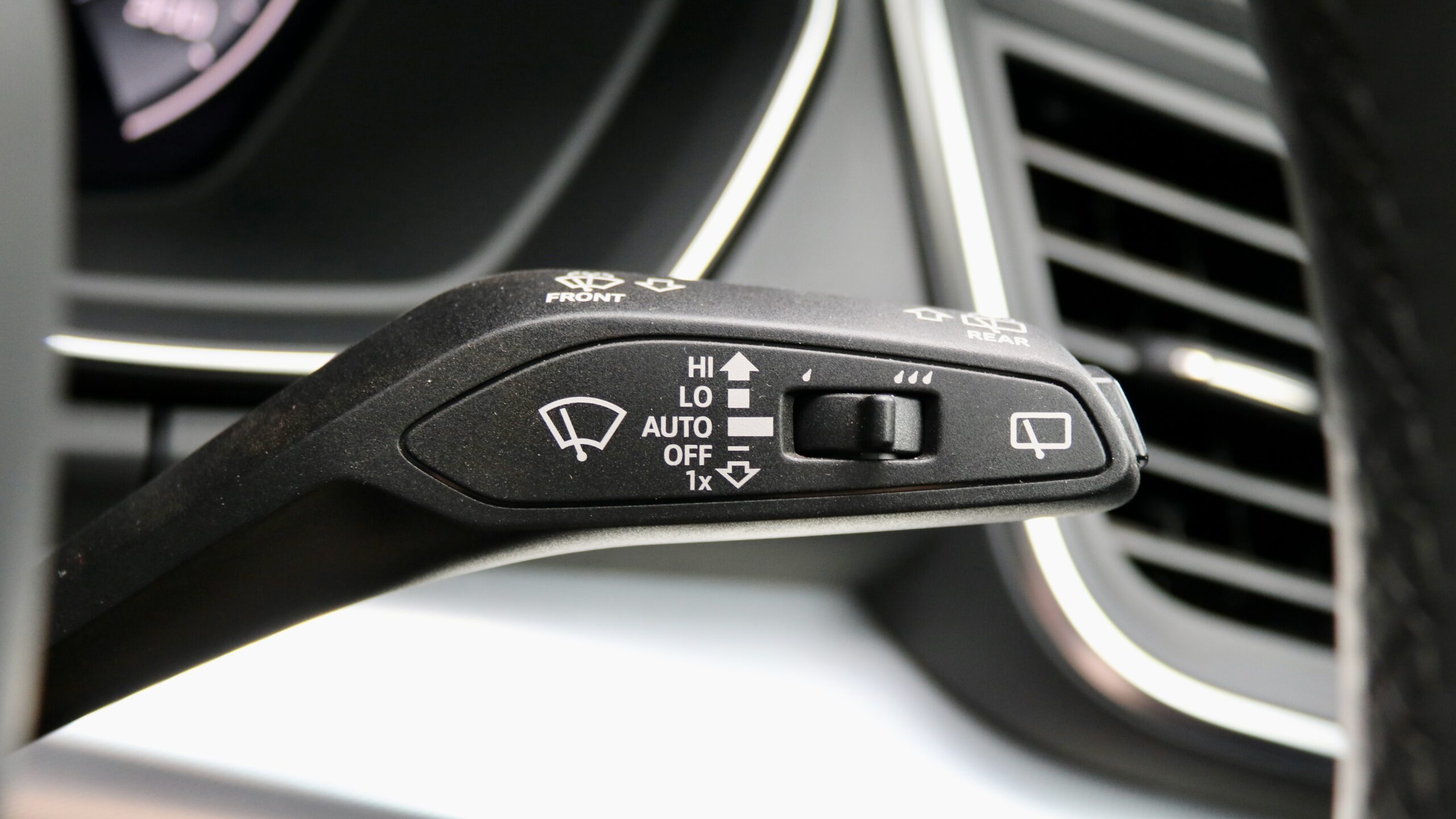
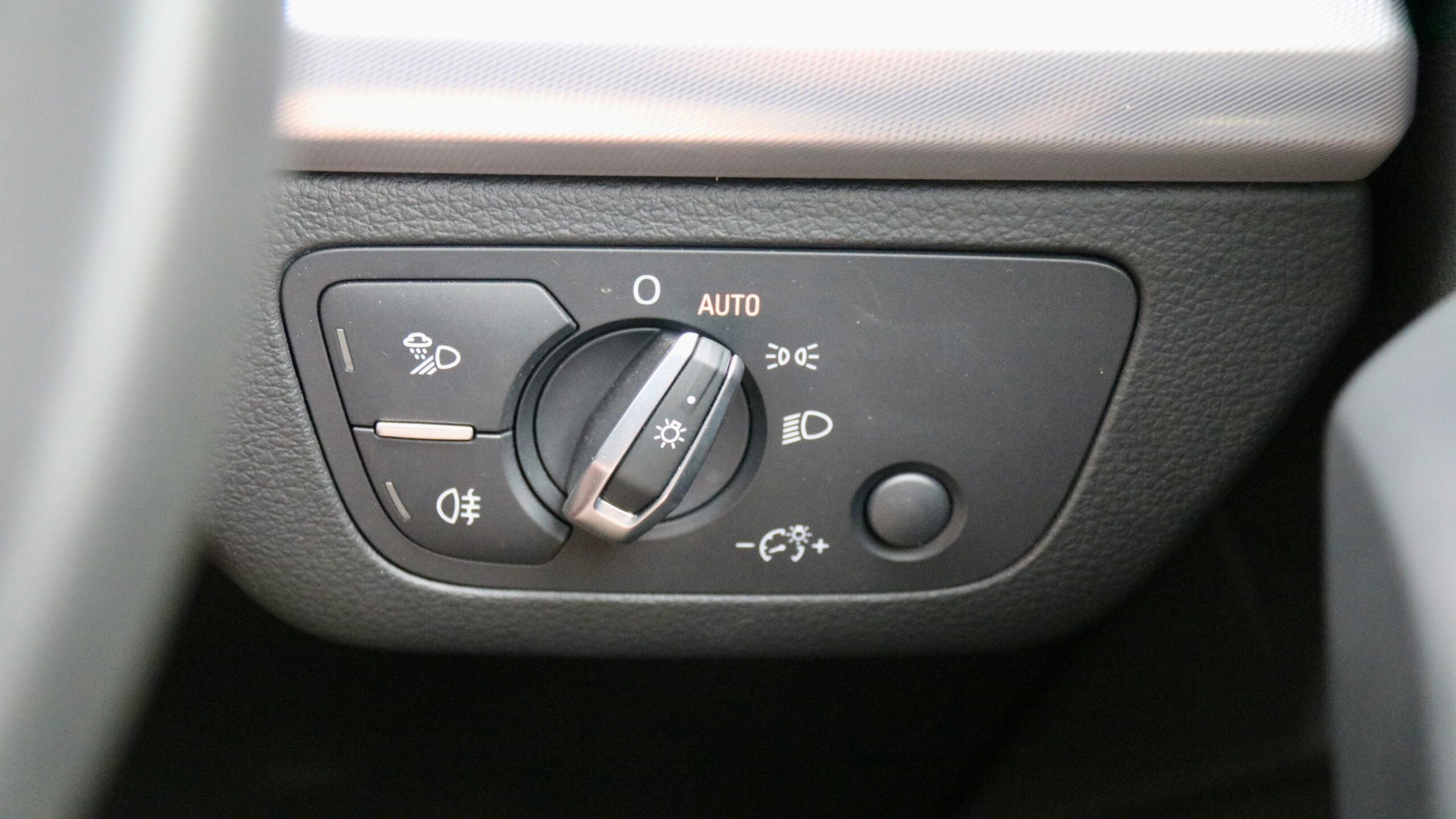
2023 Audi Q5 55 TFSI e colour range:
- Arkona White
- Iris White
- Glacier White ($1,990)
- Mythos Black ($1,990)
- Ultra Blue ($1,990)
- Navarra Blue ($1,990)
- Chronos Grey ($1,990)
- Daytona Grey ($1,990)
- Florret Silver ($1,990)
- District Green ($1,990 and fitted to our test car)
The interior can be had in either black, beige, light grey and brown at no extra cost.
2023 Audi Q5 55 TFSI e options:
- Technik Package (Matrix auto high beam, sequential front and rear indicators, 755-watt 19-speaker Bang & Olufsen sound system, head-up display): $4,900
- Black exterior styling package (gloss black window surrounds, grille frame, roof rails): $1,300
- Adaptive air suspension: $4,000
- Climate control cup holders: $390
- Piano black interior inlays: $520
- Electric steering column adjustment: $950
- 21-inch Audi Sport wheels: $1,700
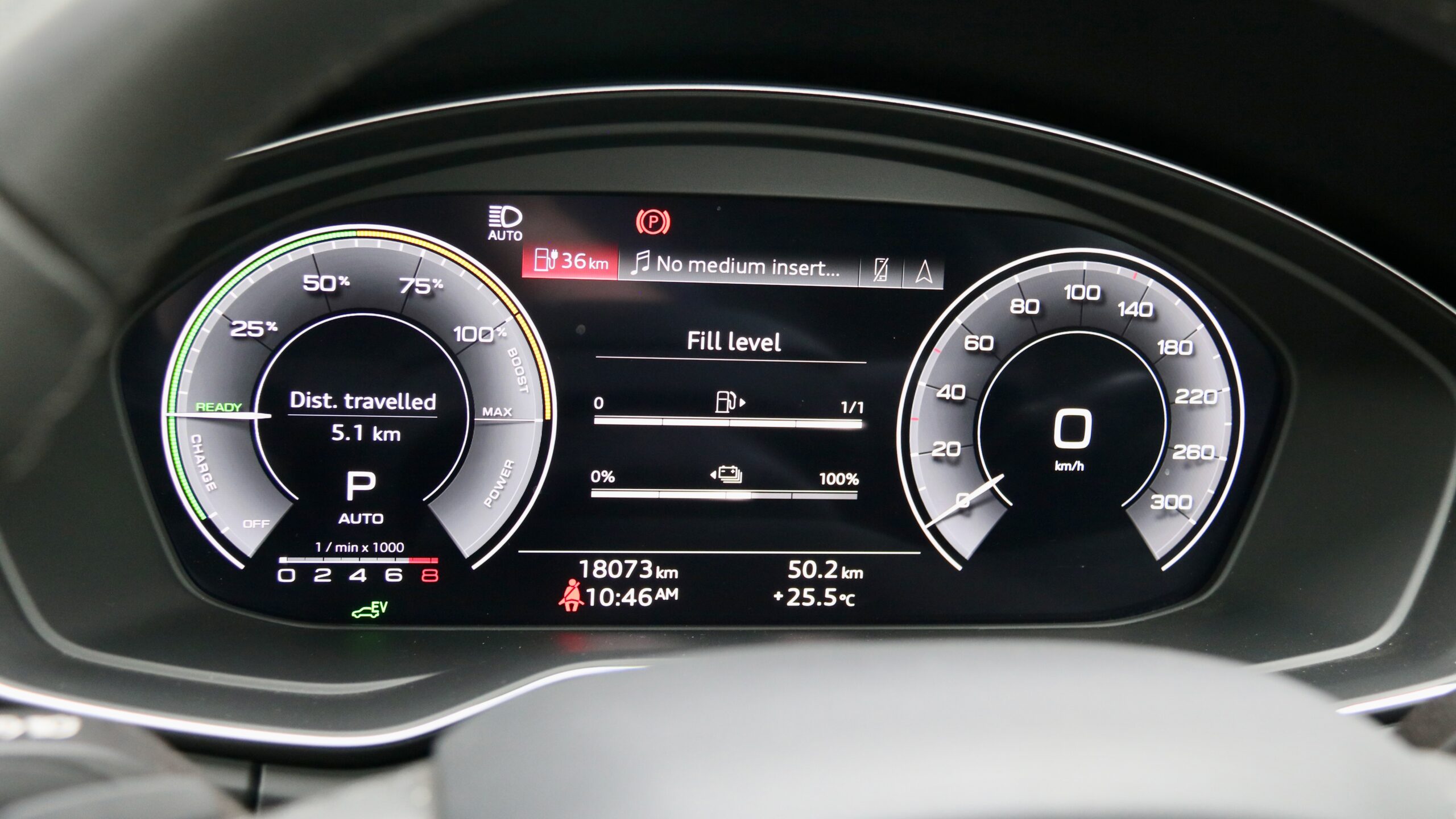
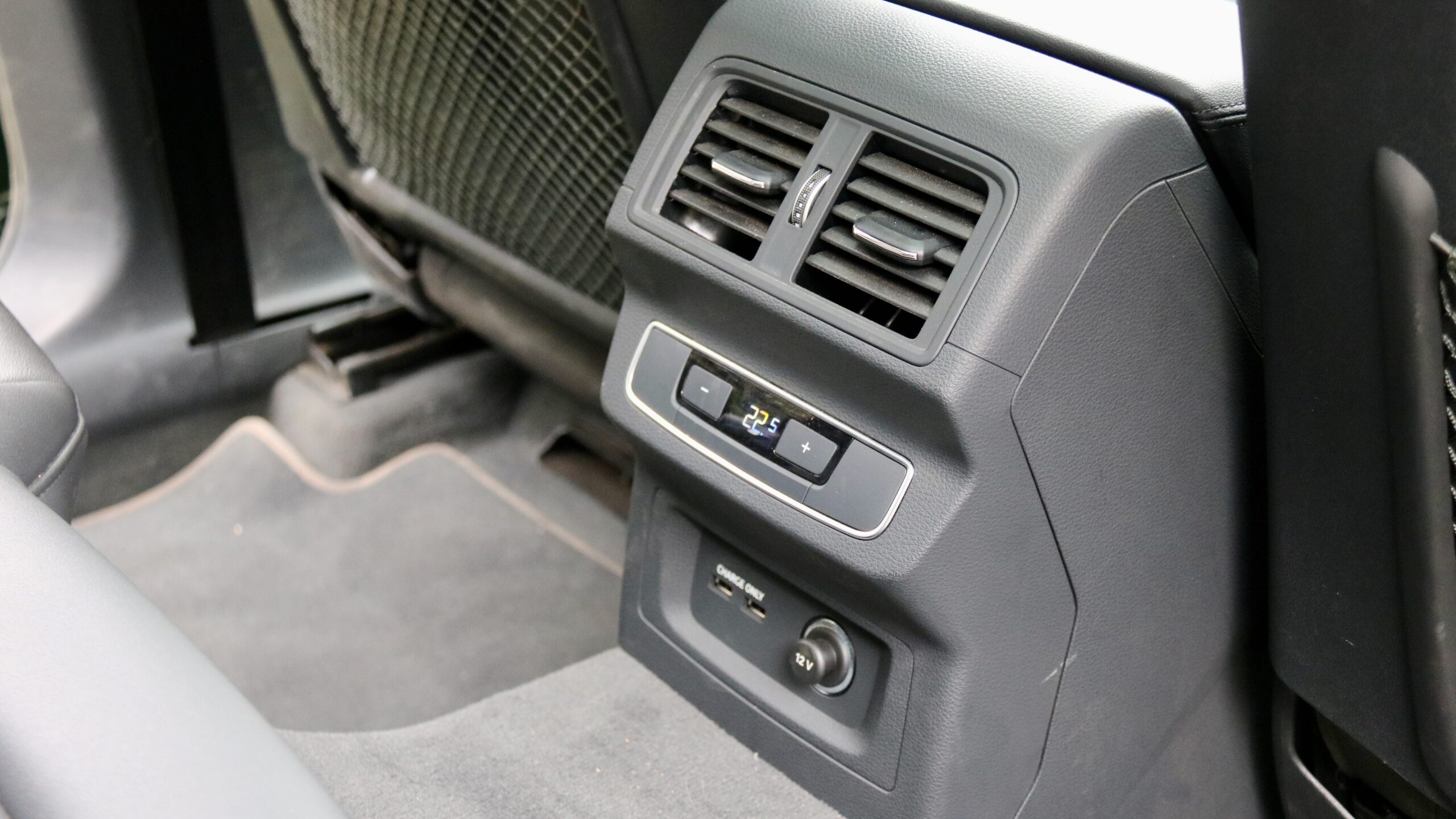
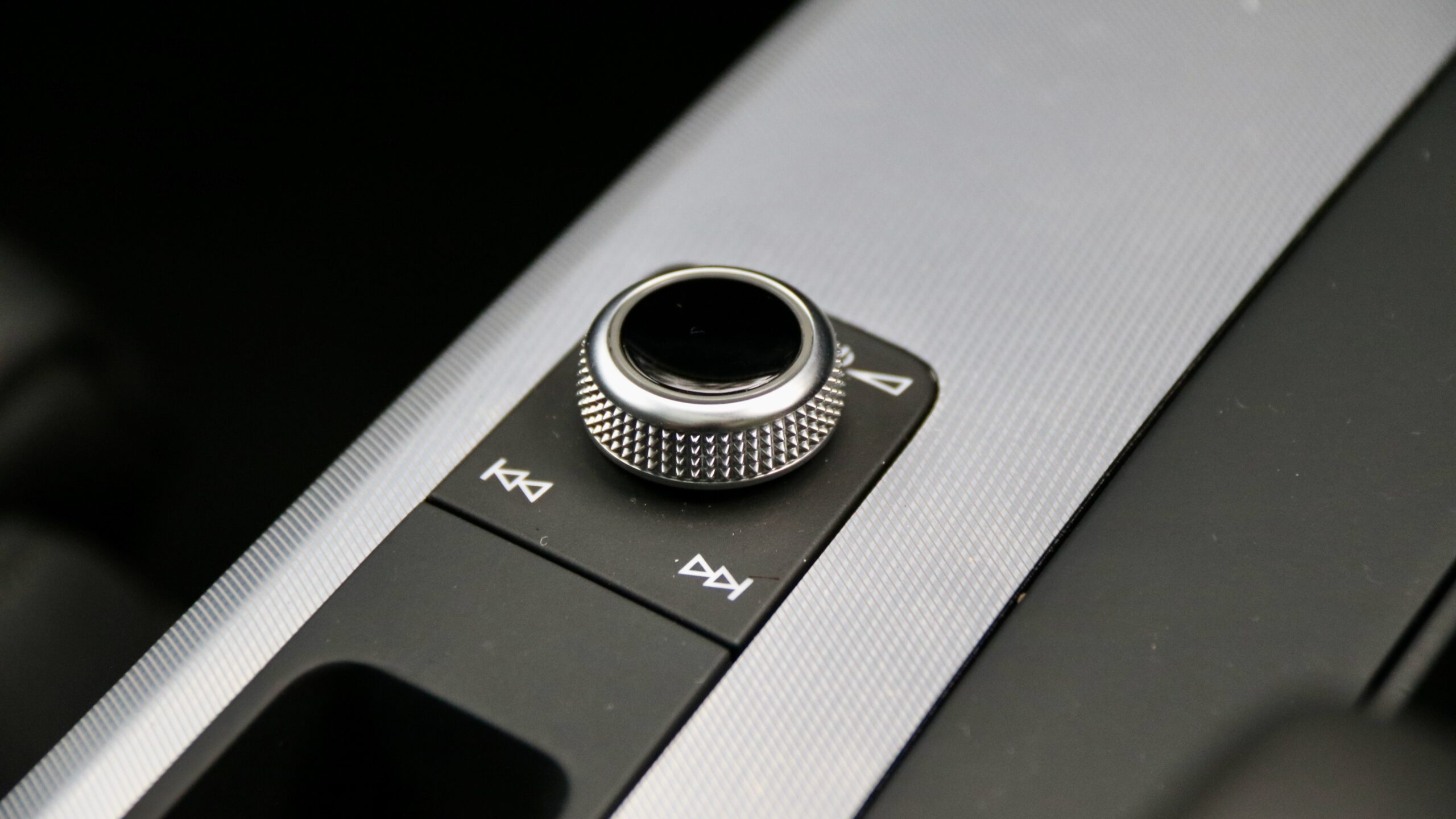

There are a number of competitors to the Q5 55 TFSI e as this segment seems to offer the most in Australia. Competing against it are the BMW X3 xDrive30e, Land Rover Range Rover Evoque P300e and Mazda CX-60 P50e Azami, though we consider the Volvo XC60 T8 Recharge ($101,990 plus on-road costs) to be its chief competitor.
Against the Audi, the XC60 T8 Recharge is even more powerful with 340kW of power and it offers up to a claimed 77km of electric range from its larger 18.6kWh battery. As for equipment, the XC60 is even better equipped than the Q5 55 TFSI e with a head-up display, a heated steering wheel, a 1,410W 15-speaker Bowers and Wilkins sound system, adaptive air suspension, larger 21-inch alloy wheels and Nappa leather upholstery. The Audi returns with tri-zone climate control, but it’s difficult not to overlook how much more equipment the Volvo features.
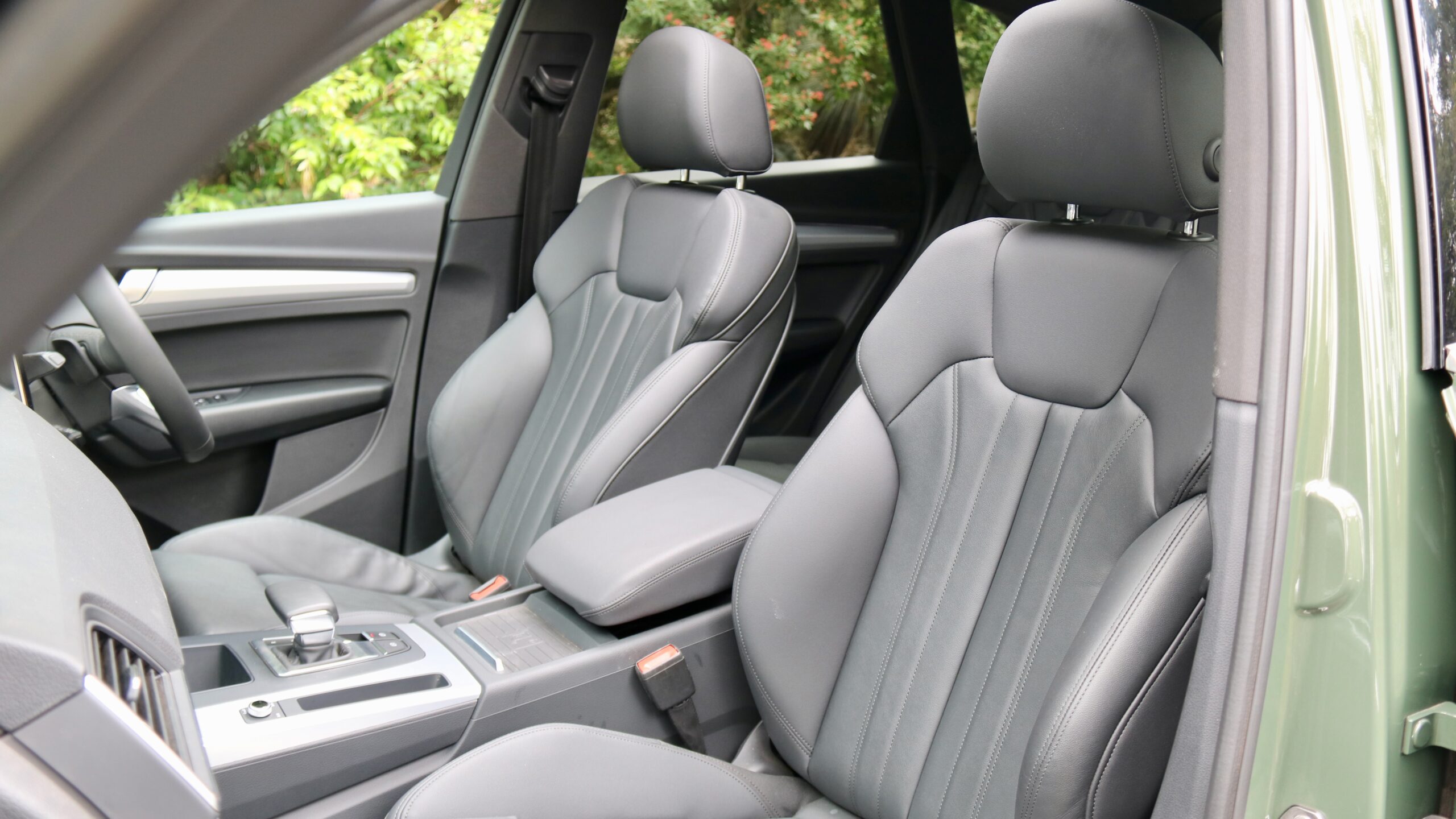
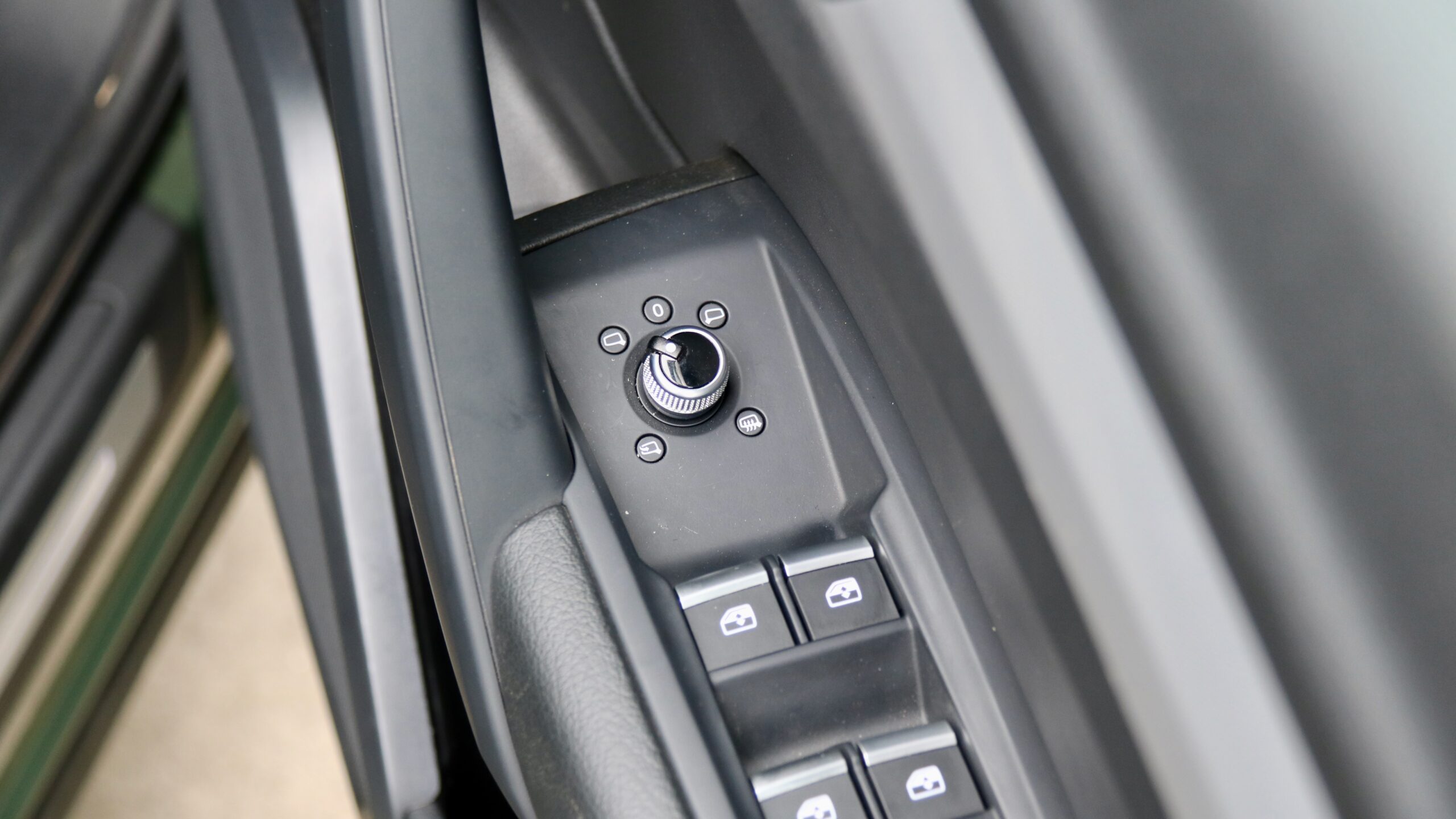
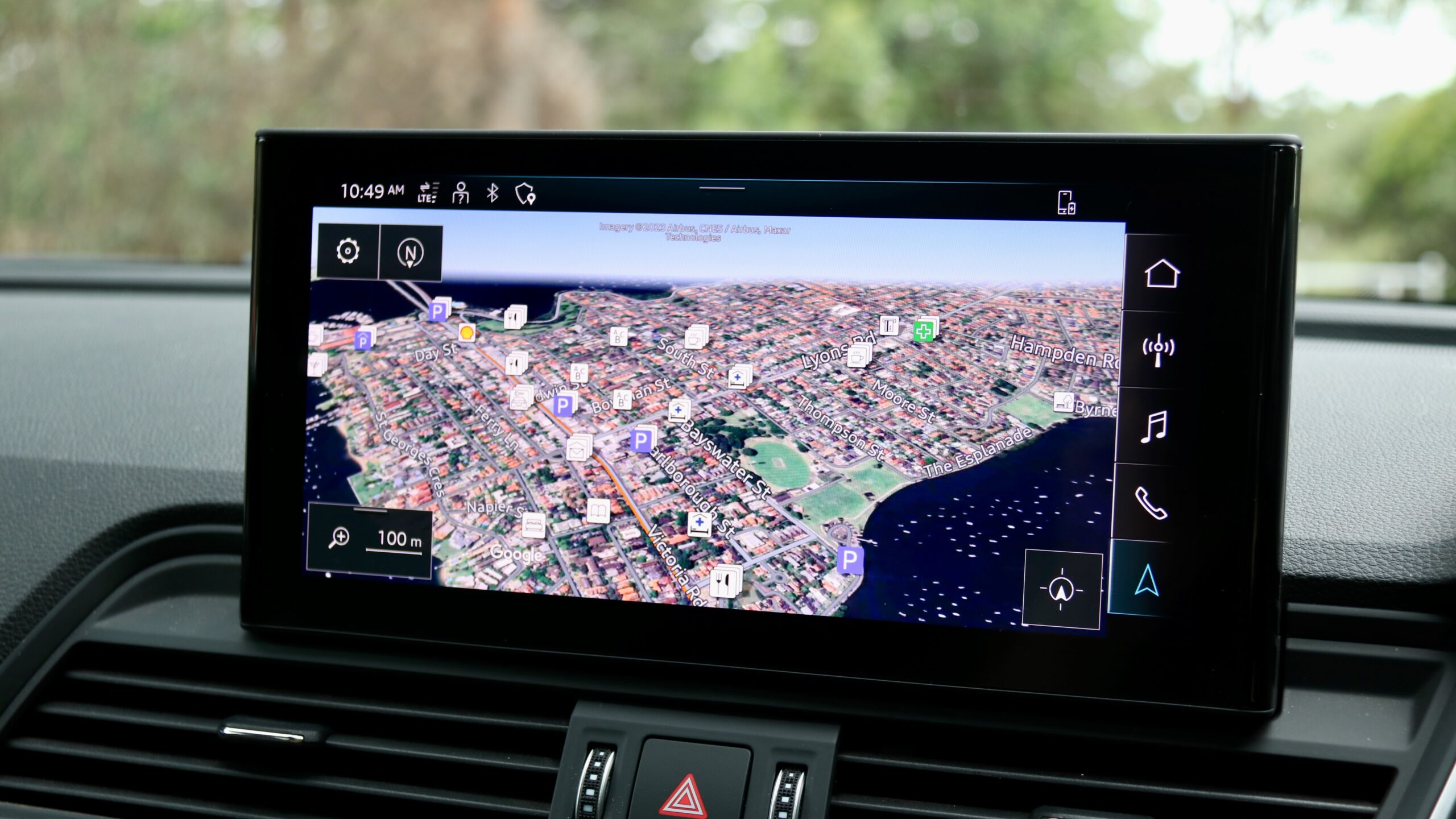
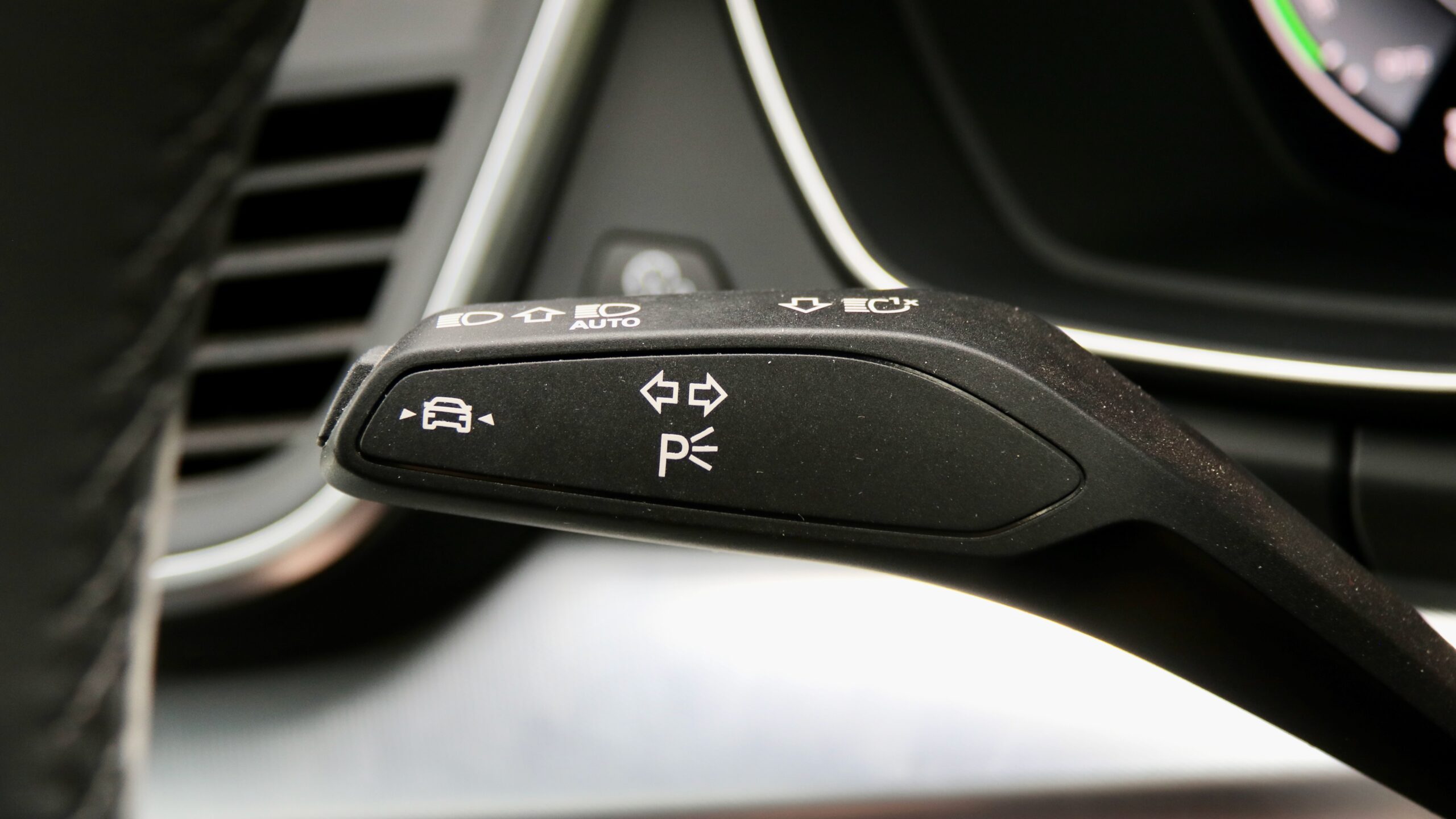
Yet on the flip side, the X3 xDrive30e starts at $111,800 plus on-road costs and buyers must add $6,500 of options to match the equipment levels of the Audi. While the Q5 55 TFSI e could be cheaper, it could also be a lot more expensive against its plug-in hybrid competition – though, it does cost a cool $16,800 more than the Q5 45 TFSI that sits below it, which buys a lot of fuel.
Performance & Economy: 8/10
Powering the 2023 Audi Q5 55 TFSI e PHEV is a 195kW/370Nm 2.0-litre turbocharged four-cylinder petrol engine that’s matched to a 105kW/350Nm electric motor, which draw power from a 14.4kWh lithium-ion battery mounted under the rear floor. The combined power and torque figures are 270kW and 500Nm respectively, making it the most powerful Q5 available – the claimed 0-100km/h sprint time is just 5.3 seconds but it feels faster than that thanks to the instant torque of the electric motor. The drivetrain is also the most refined plug-in hybrid we’ve driven, and that’s thanks to its excellent refinement – the transition from electric to petrol power is quite smooth and even with the engine on, it’s quiet.
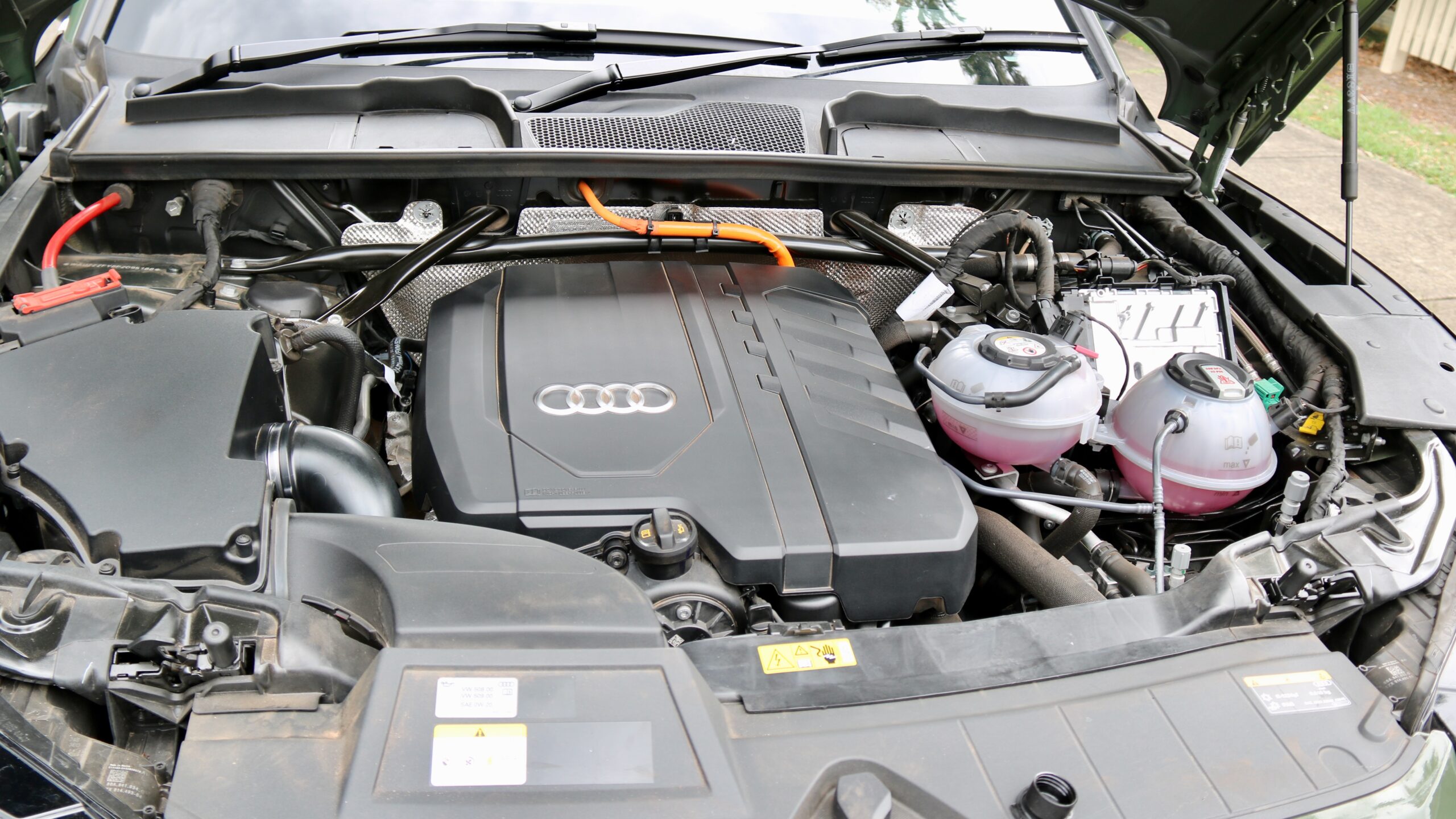
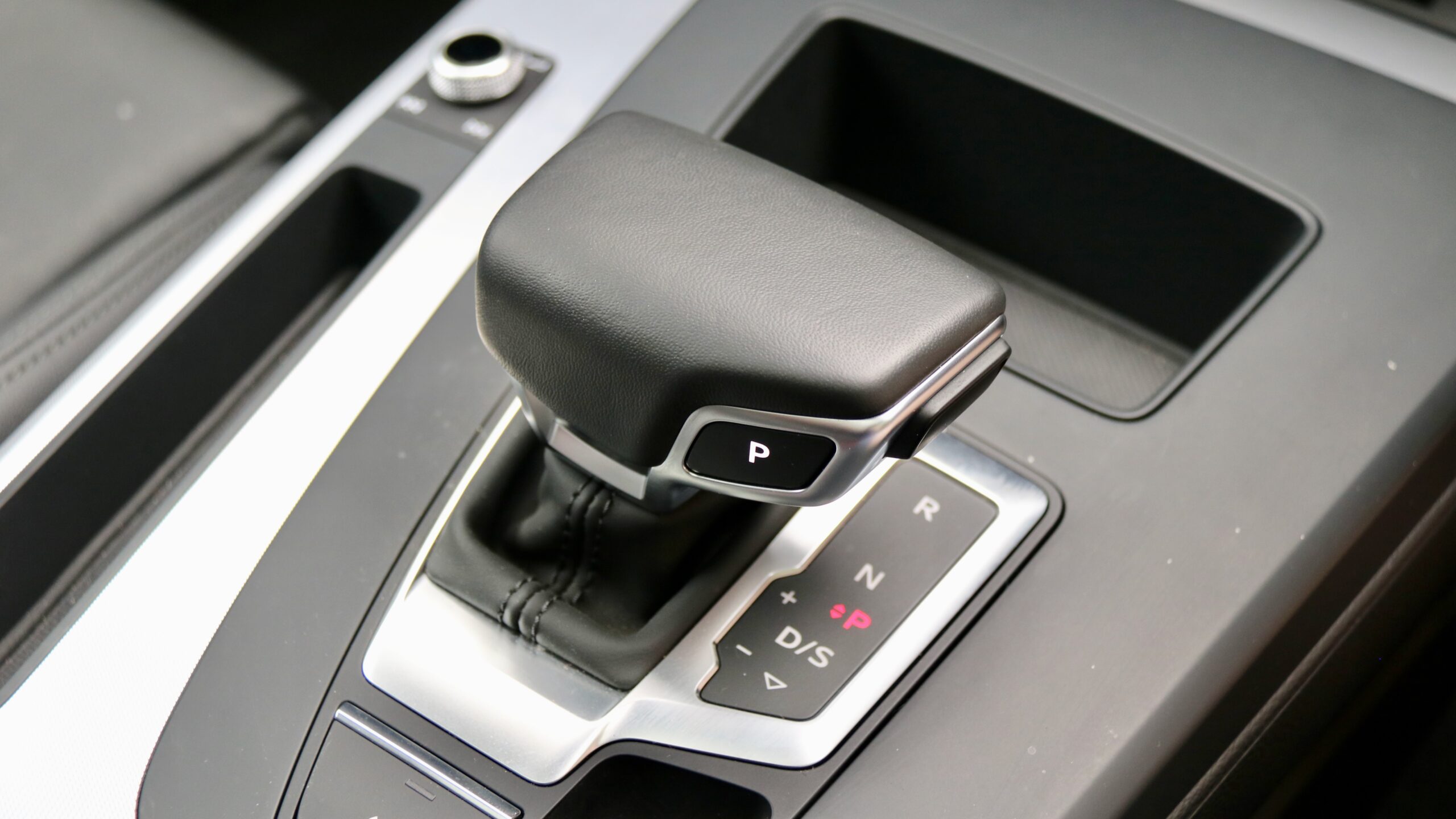
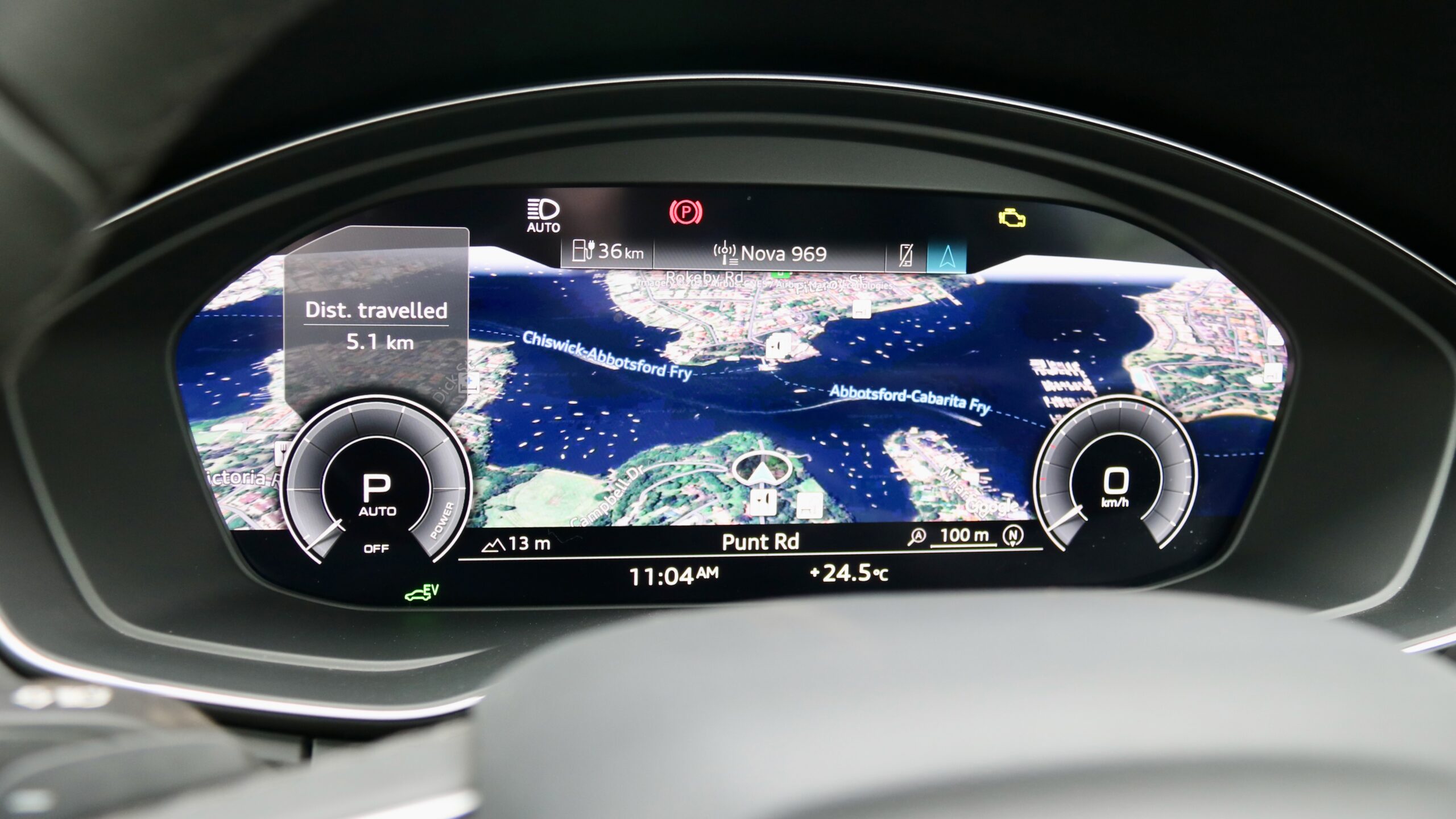
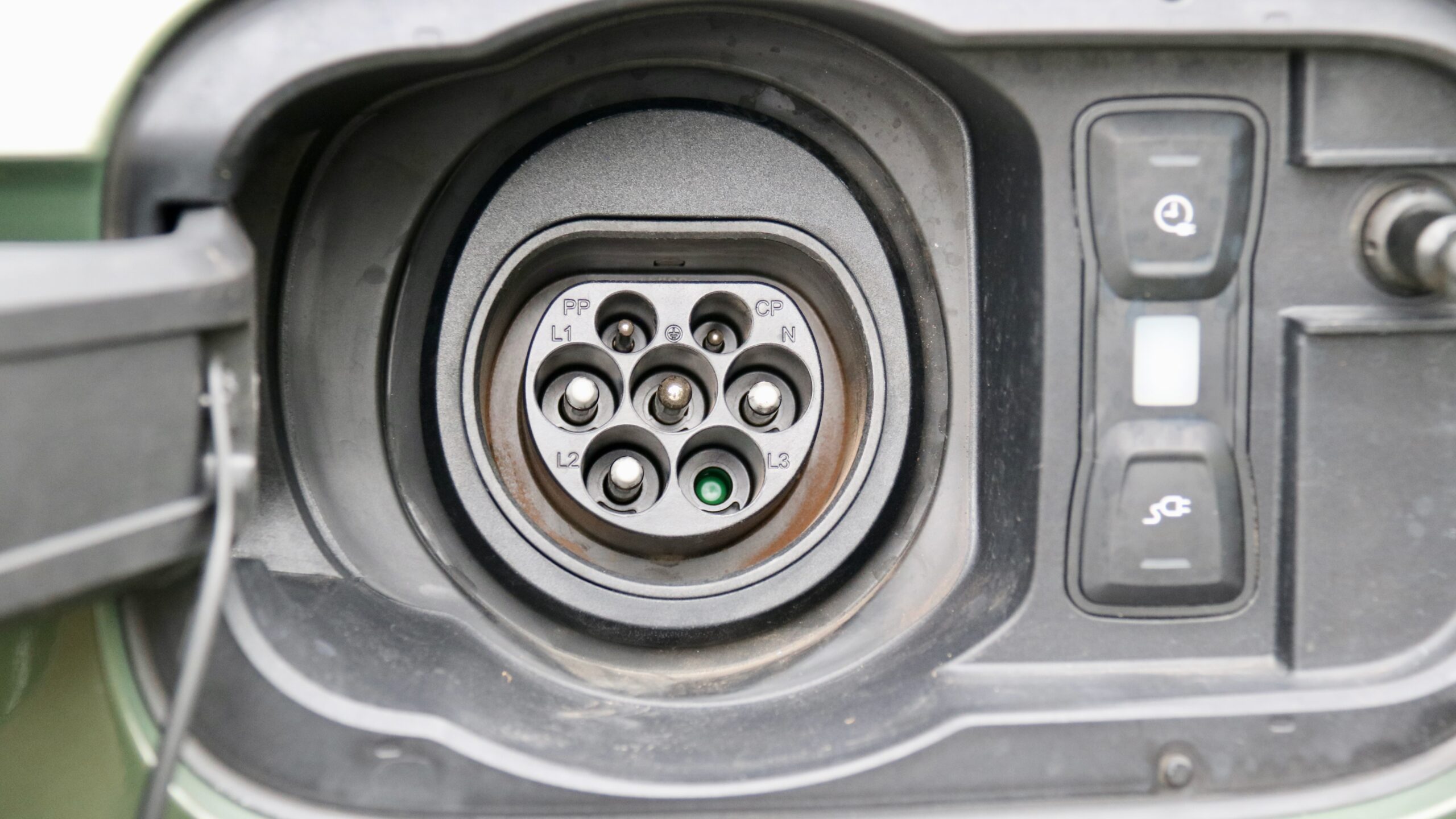
Unlike most hybrid and plug-in hybrid vehicles, the Q5 uses a regular geared transmission – in this case, a seven-speed dual-clutch unit. This gives the Q5 a more ‘car like’ driving nature – in hybrid mode, it feels a lot like a regular Q5 45 TFSI, just with extra electric shove. Helping the Q5’ fuel economy and ability to run solely on electric power is its regenerative braking, which uses navigation data and the vehicle’s radar to adjust its level – for example, it automatically adds more braking when doing downhill to recoup more energy. We found this to be a bit odd at first but that it does it automatically is great.
As with any other plug-in hybrid, the key to achieving anywhere near the claimed economy is the ability to charge it often. Audi says that the maximum charging rate for the Q5 is 7.2kW and the fastest 0-100 per cent charge time is around 2.5 hours, while using a household plug will give a full charge in around eight hours, which is perfect for an overnight charge.
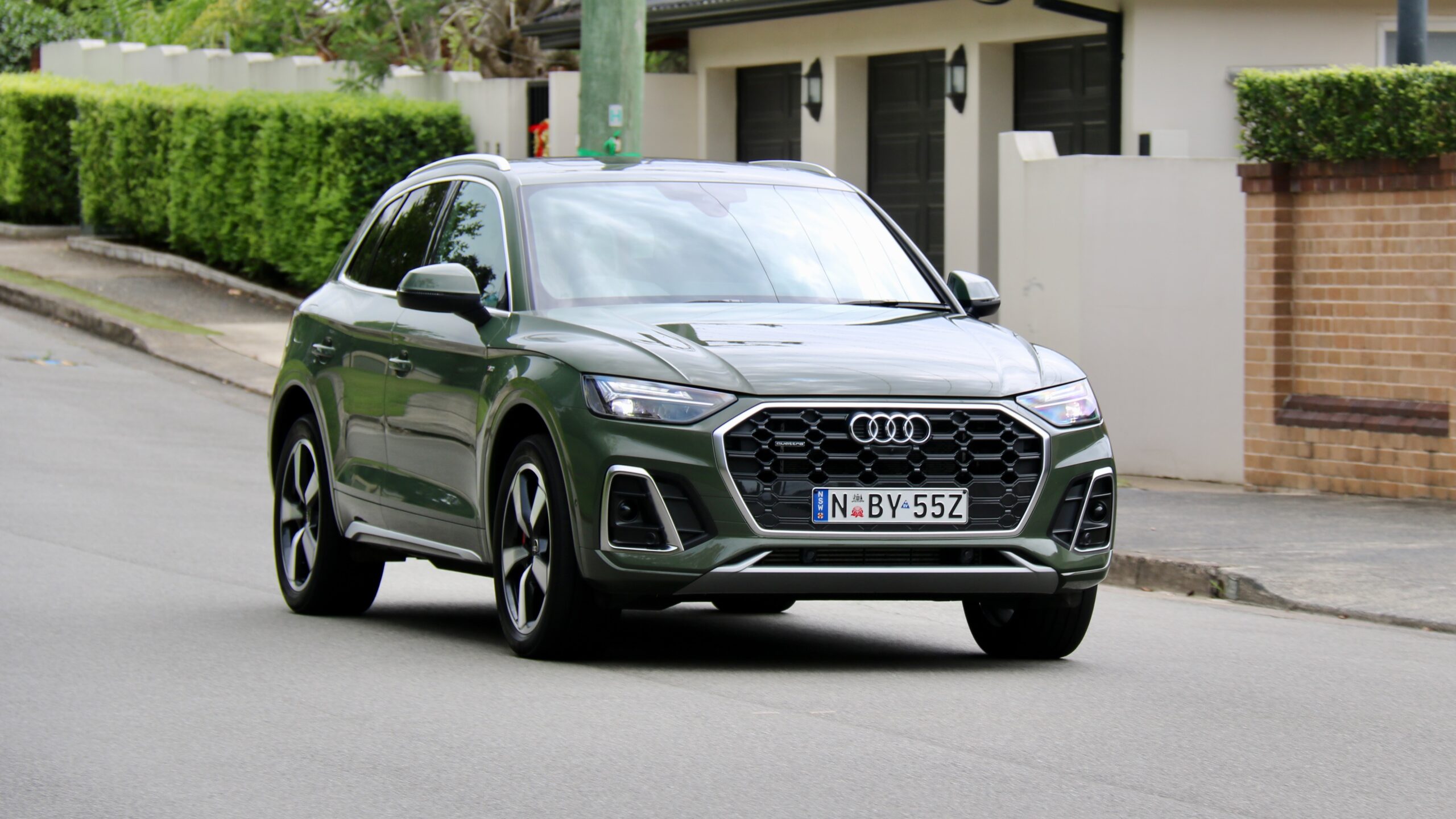
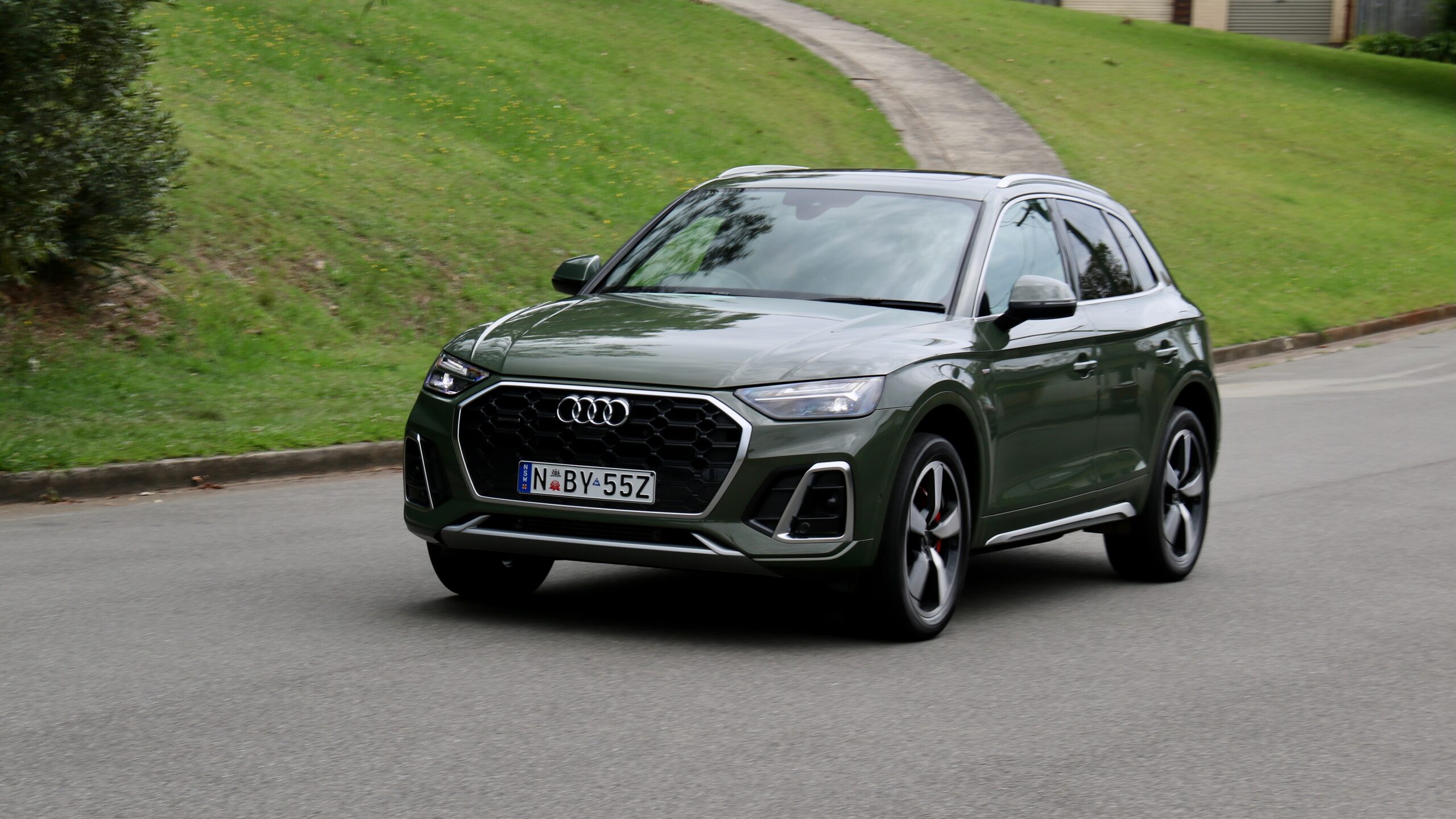
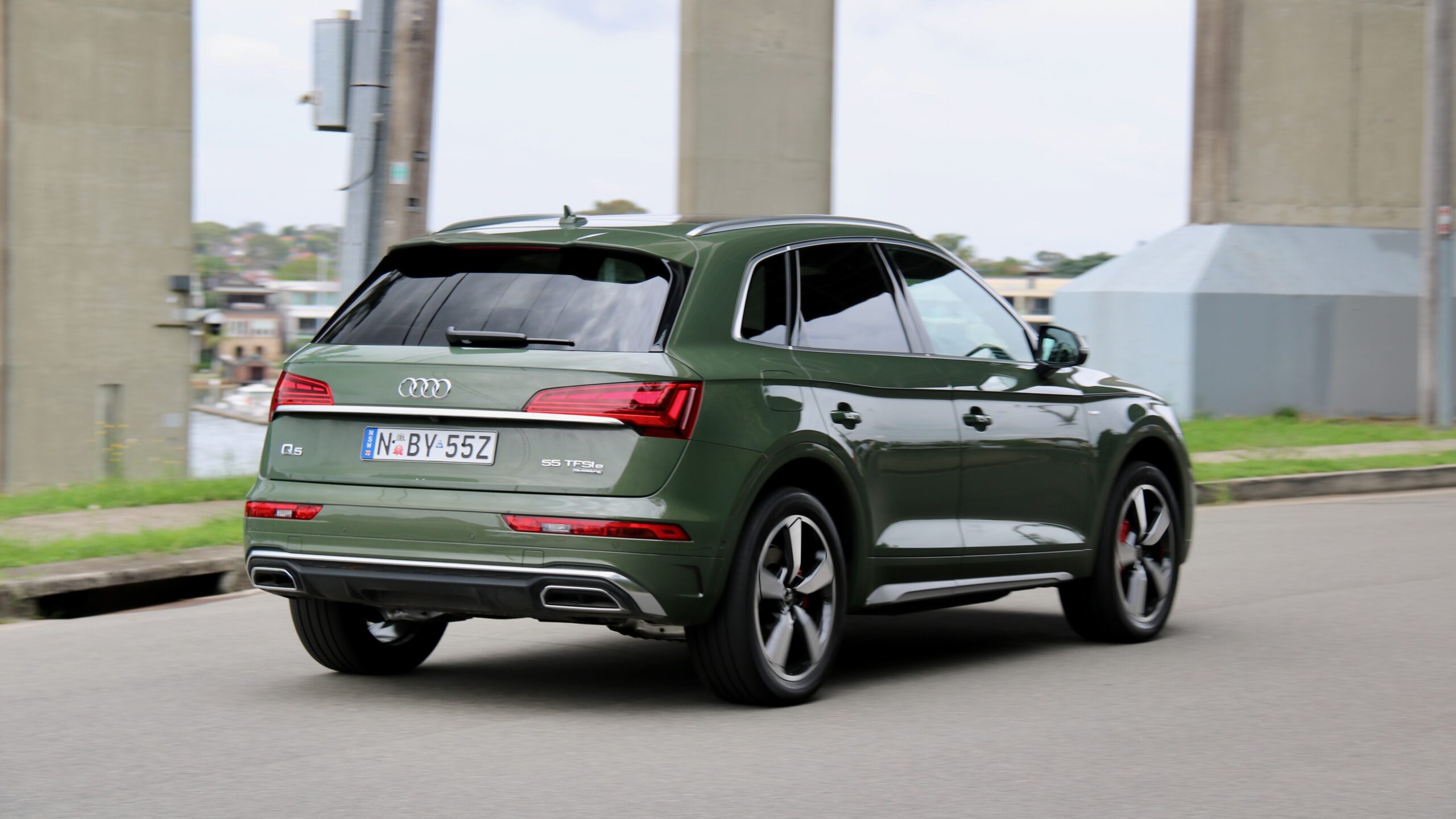
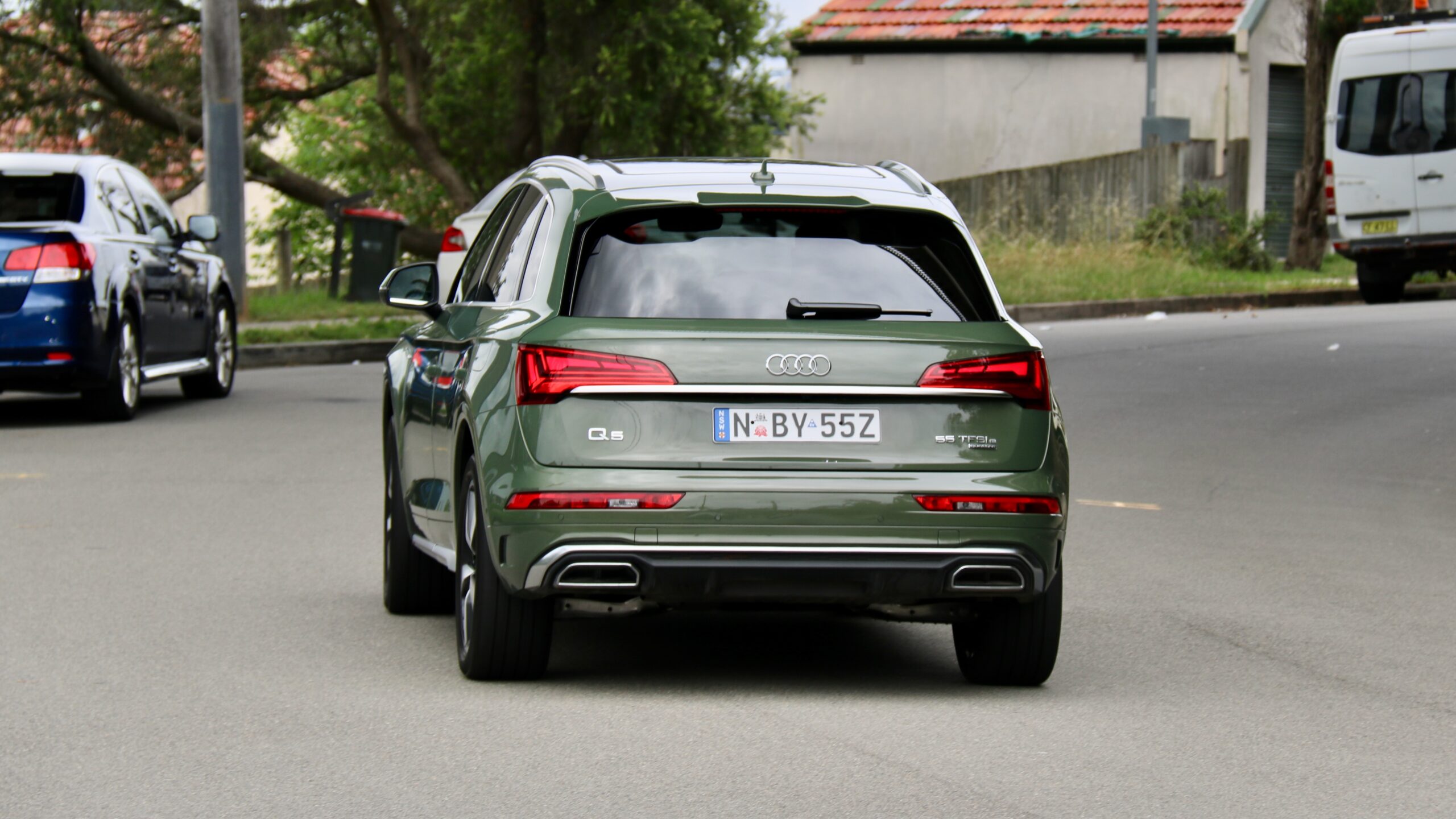
Audi claims that the Q5 55 TFSI e will use just 2.0L/100km of fuel, 23.9kWh/100km of energy, an all-electric range of 55km with CO2 emissions of 45g/km – that’s versus the Volvo XC60 Recharge’s official 1.6L/100km average economy and 75km electric range. In reality, we achieved an average of the 55km claim for our electric-only driving, and after that for 100km trips, we achieved 5.1L/100km and 17.6kWh/100km. That’s more than double the claim for fuel, but we think it’s quite good for an SUV that weighs over two tonnes and offers 270kW of punch, but that will obviously change with how much it’s charged. The 2023 Audi Q5 55 TFSI e requires 95RON fuel to fill its 54-litre fuel tank.
Ride & Handling: 8.5/10
Using the same ‘MLB evo’ platform as the regular Q5, the 2023 Audi Q5 55 TFSI e drives quite well, and the adoption of its PHEV system – despite weighing 215kg more than a Q5 45 TFSI at 2,210kg tare – hasn’t imposed much on its dynamic ability. While the Q5 is not quite as dynamic as the X3, nor is it as softly sprung as an XC60, it provides a nice balance. The PHEV system has made the Q5 fairly evenly balanced, and while there’s not too much feel from the steering, it drives quite well and can be reasonably fun from behind the wheel. The ride quality is quite well judged, even without the optional air suspension on our test car, and it’s generally quite comfortable.
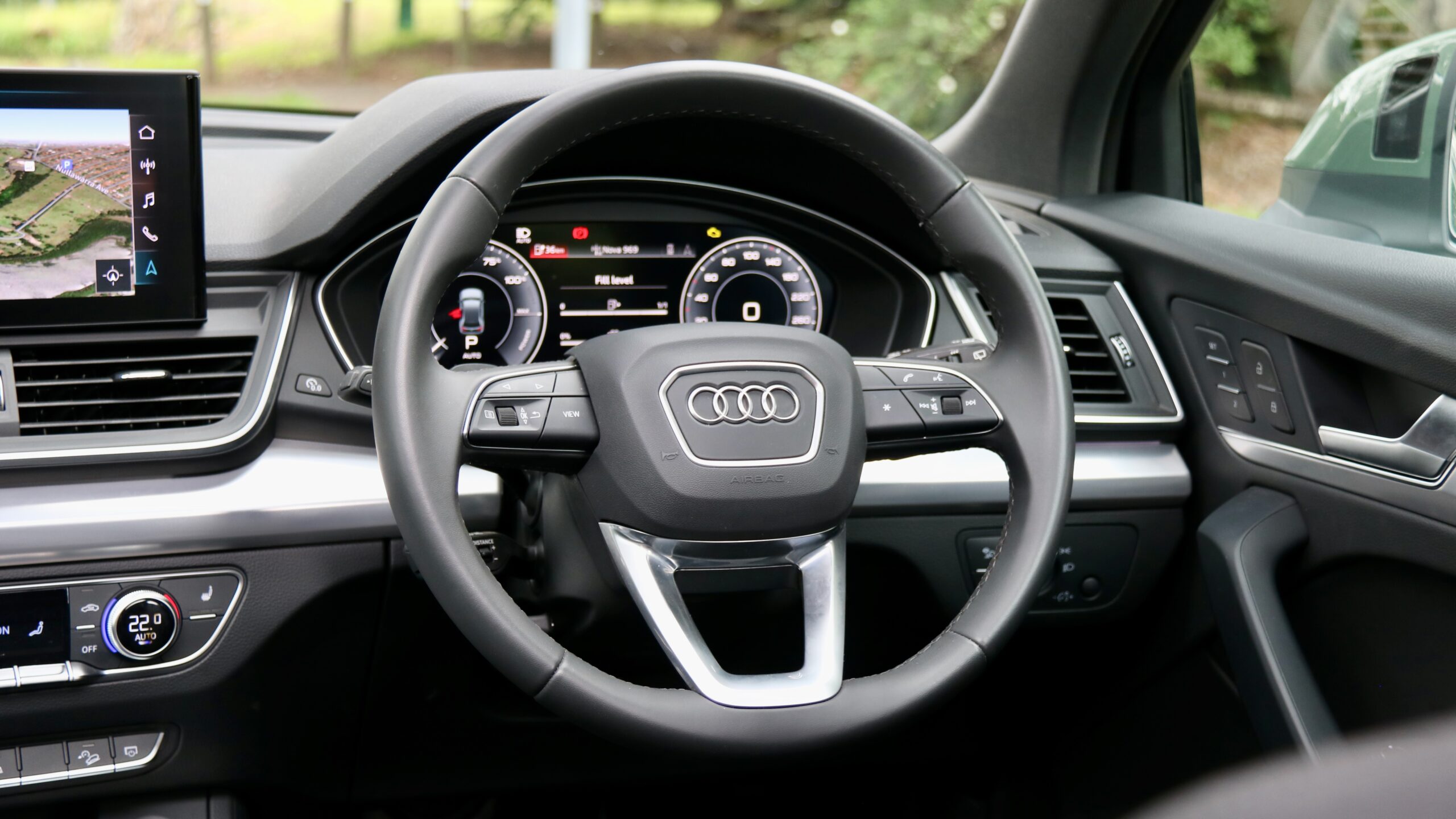
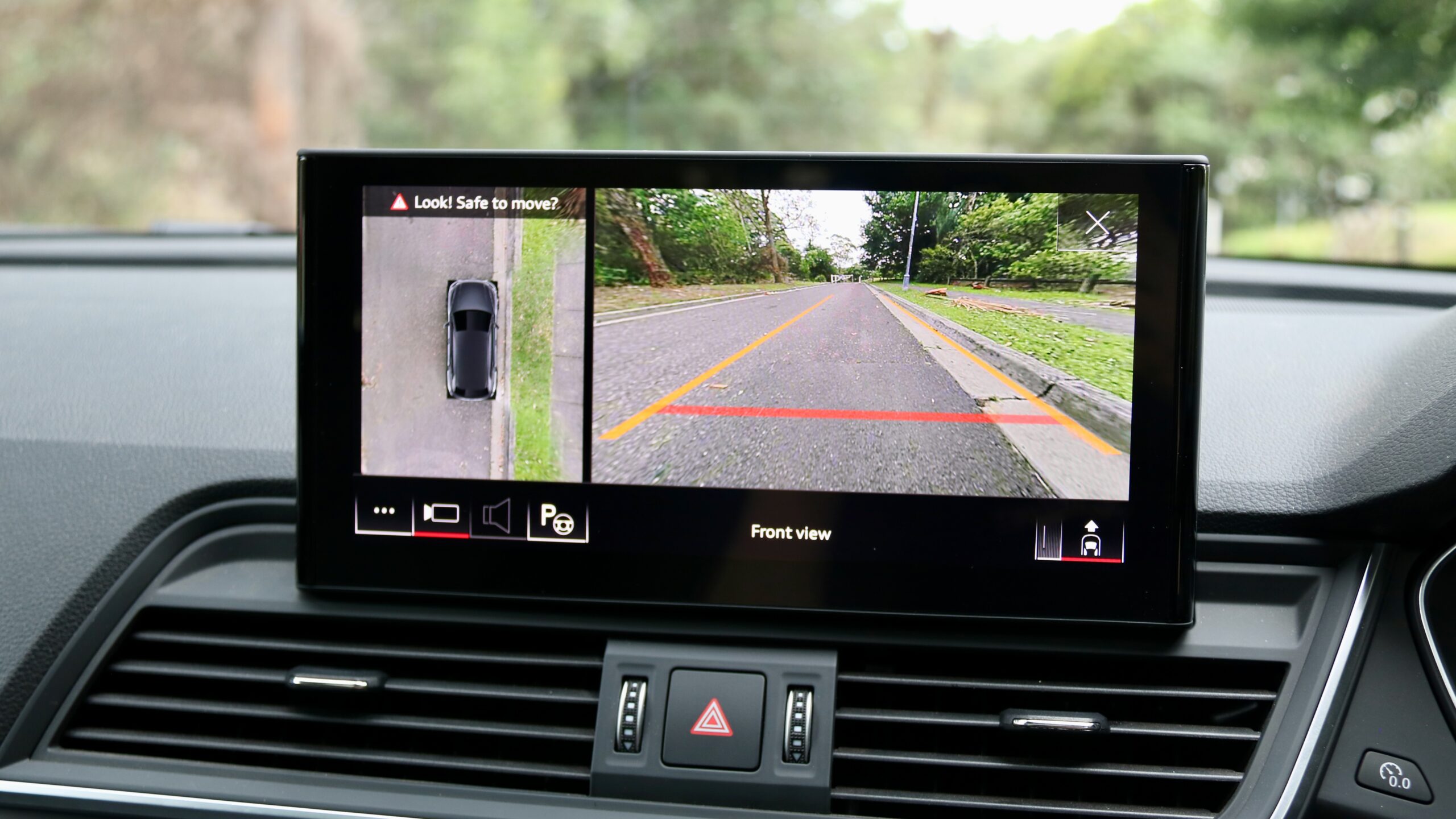
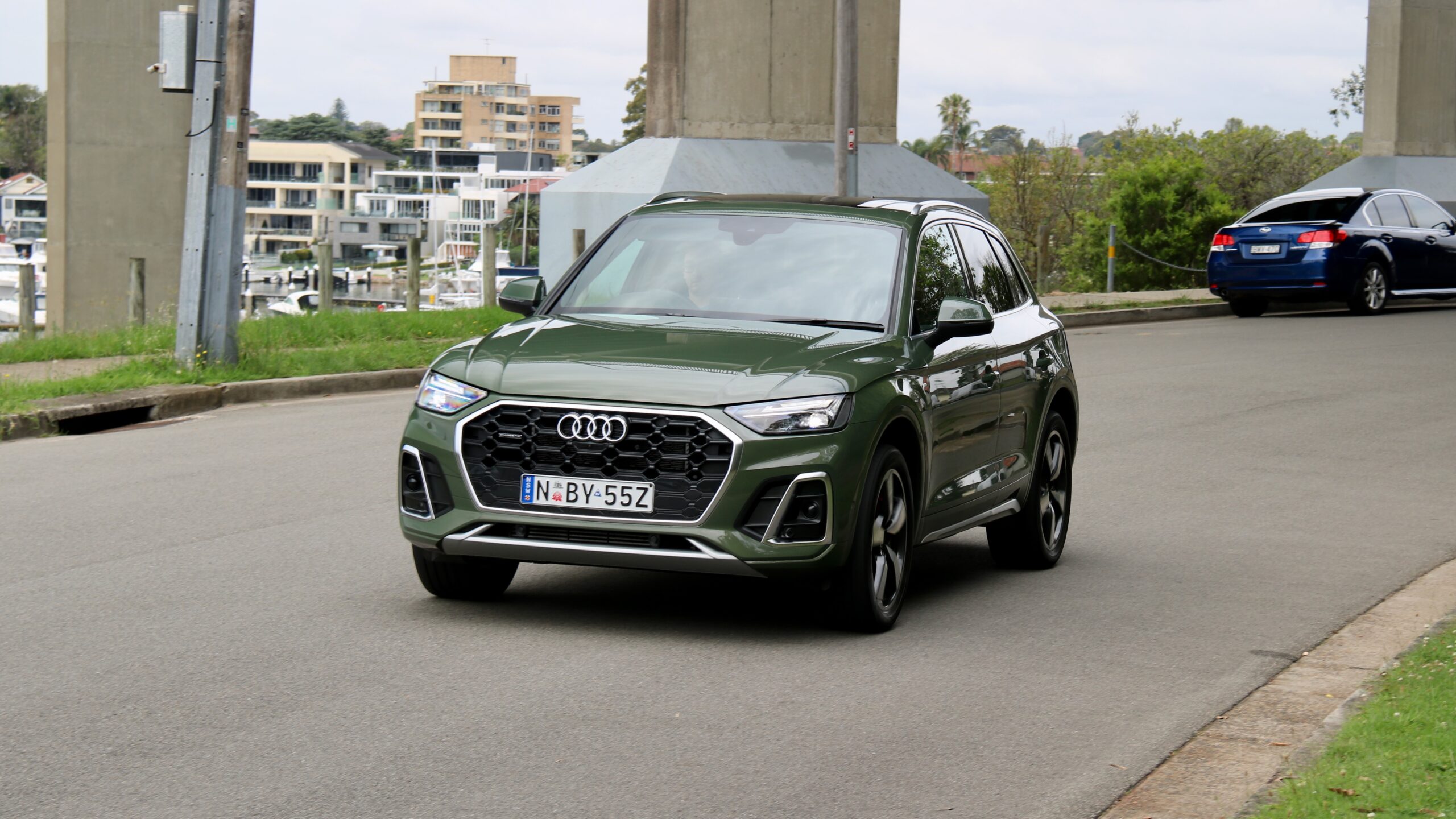
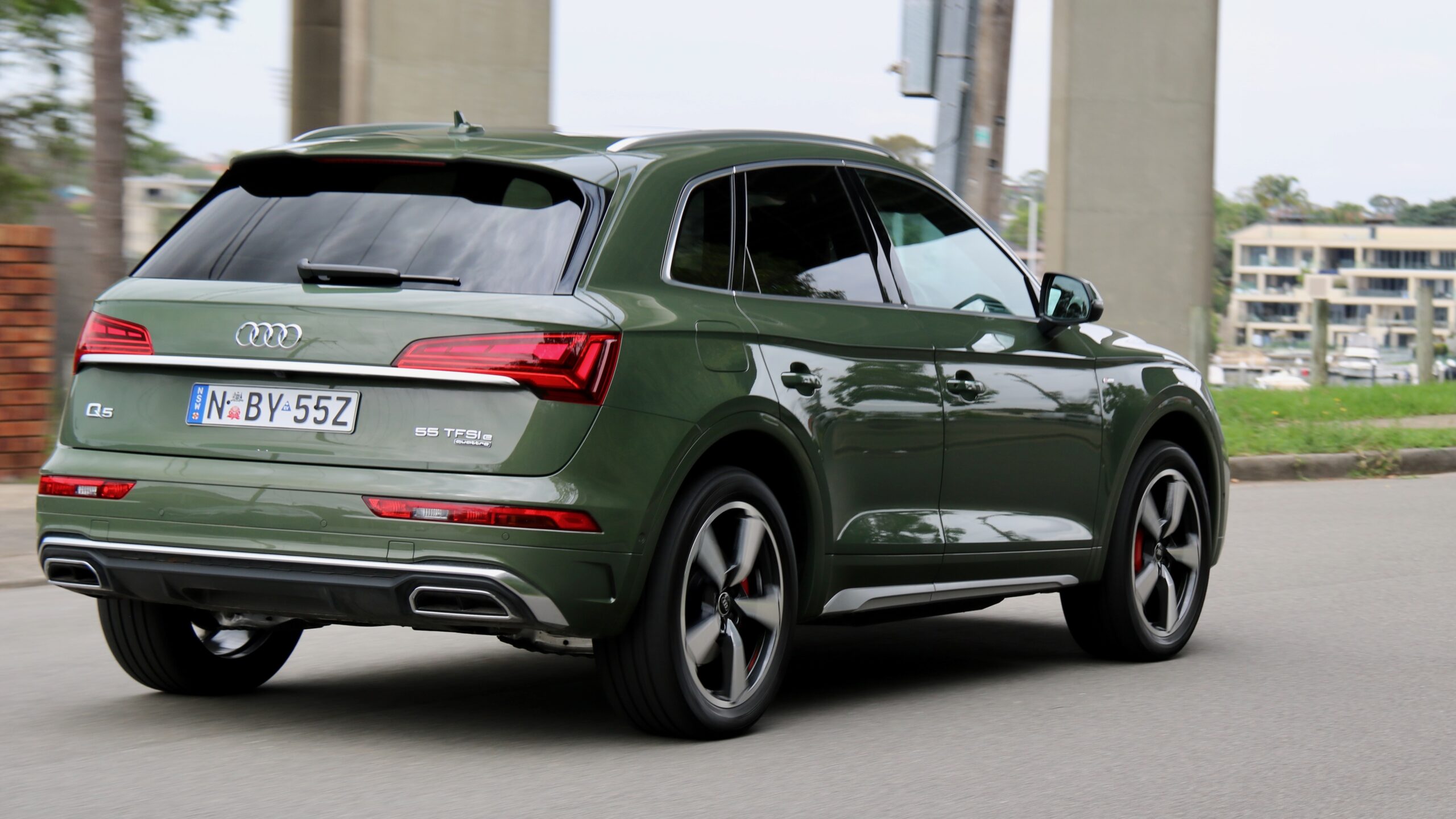
Unlike some PHEVs, which suffer a lot due to the extra weight and/or unbalancing of the battery, the Q5 55 TFSI e’s ride quality feels largely like a regular Q5. The brake pedal feel, however, can take some getting used to thanks to the Q5’s regenerative braking. But the Q5’s visibility is excellent, and its road noise levels are fairly low as well. Its active safety systems are also quite good, particularly the active lane trace assistance for semi-autonomous highway driving functionality. We also appreciate how simple they are to change and turn on or off.
Interior & Practicality: 9/10
While the current shape Q5 has been around since 2017, it’s typical Audi: it’s ergonomically pleasing, it feels very tightly build, the quality is mostly pretty good, it’s well featured and the tech integration is very slick. Material quality is some of the best in the segment with soft touch dashboard and door top materials, nicely textured aluminium pieces and lovely tactile buttons throughout – we’d just like to see some soft materials on the centre console as knees can get sore while resting on it.
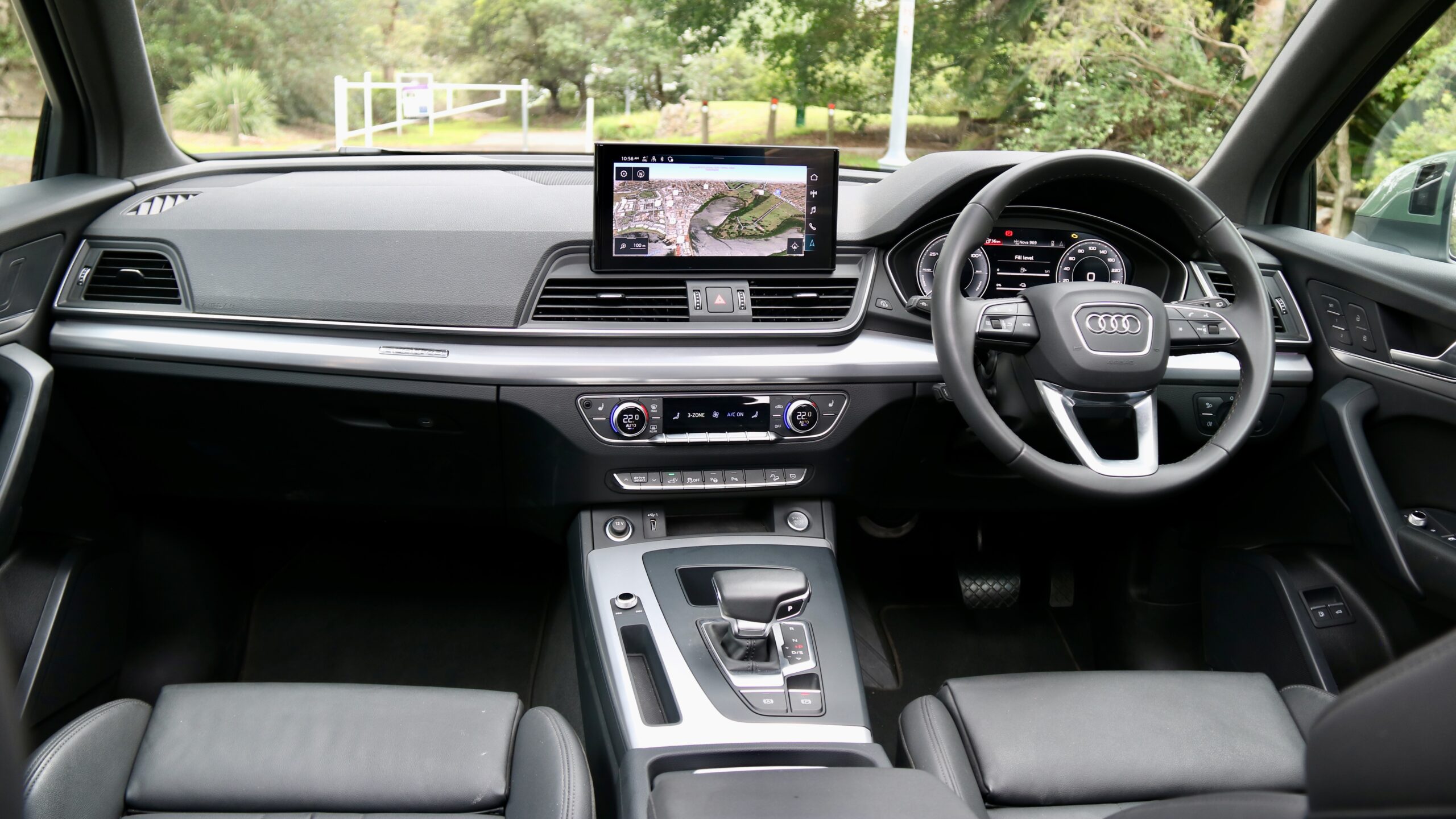
Like material quality, the storage on offer in the Q5’s cabin is pretty good. There’s a reasonable glovebox, a few trays on the centre console, a shallow hole underneath the dashboard, big flock-lined door bins and a big centre box with deep cupholders, a sliding wireless phone charger tray and storage underneath that. As for other charging options, there’s a USB-A port underneath the dashboard and a USB-C port underneath the centre armrest.
While they aren’t quite as comfortable or adjustable as the Volvo XC60, the front seats in the Audi Q5 are still a nice place to spend time. Both seats feature 12 ways of electric adjustment, plus manual under-thigh extenders. The leather used is of nice quality, and they also feature heating as standard – though both ventilation and cooling – which are available on the XC60 – are unfortunately not available at all. Making the cabin feel further special is the 30-colour LED ambient lighting, which is not too in-your-face or too bright for night driving, but makes the cabin feel special. We also really appreciate how many buttons there are around the cabin – unlike the XC60, not every feature is pushed into the centre screen.
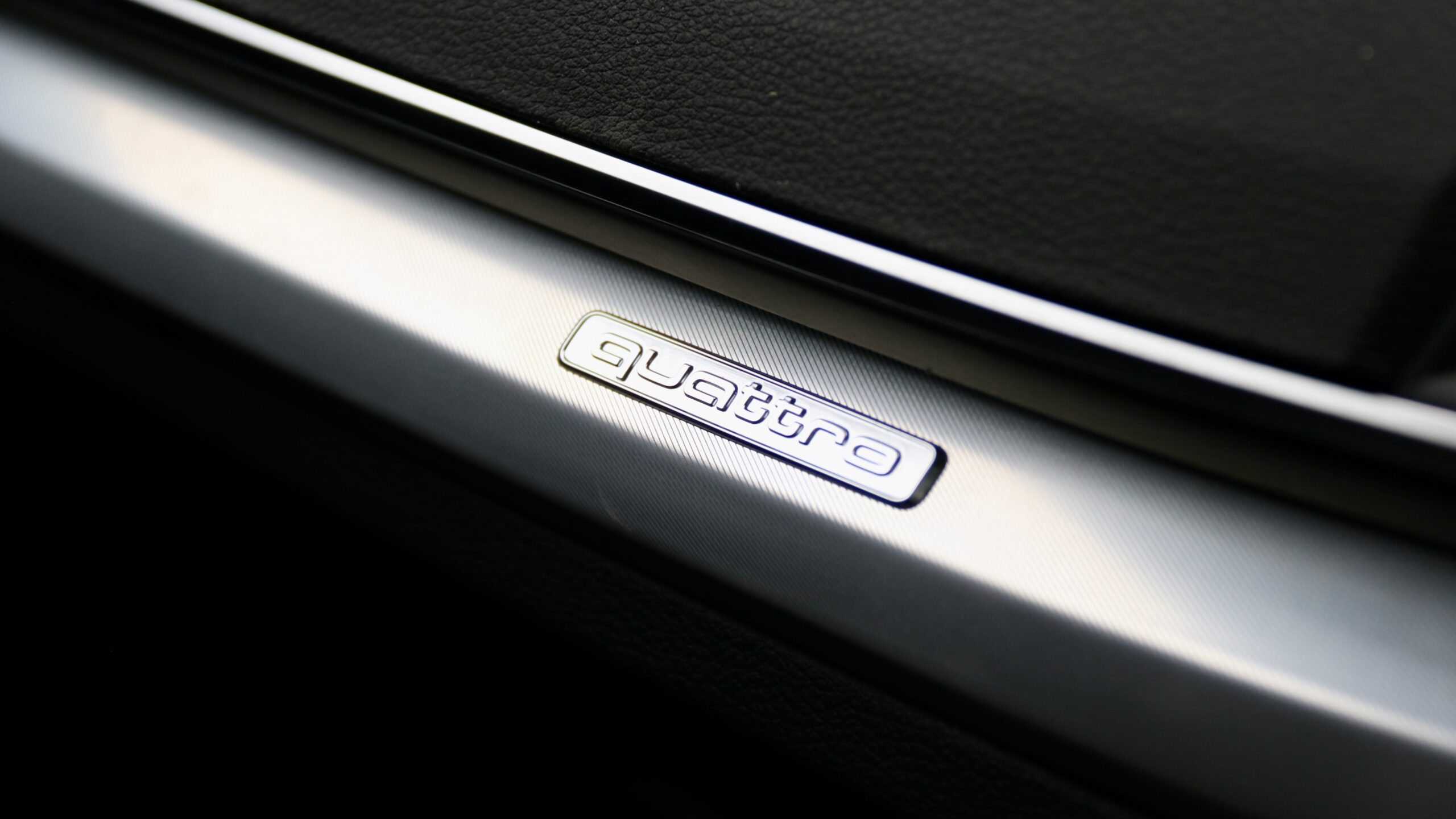
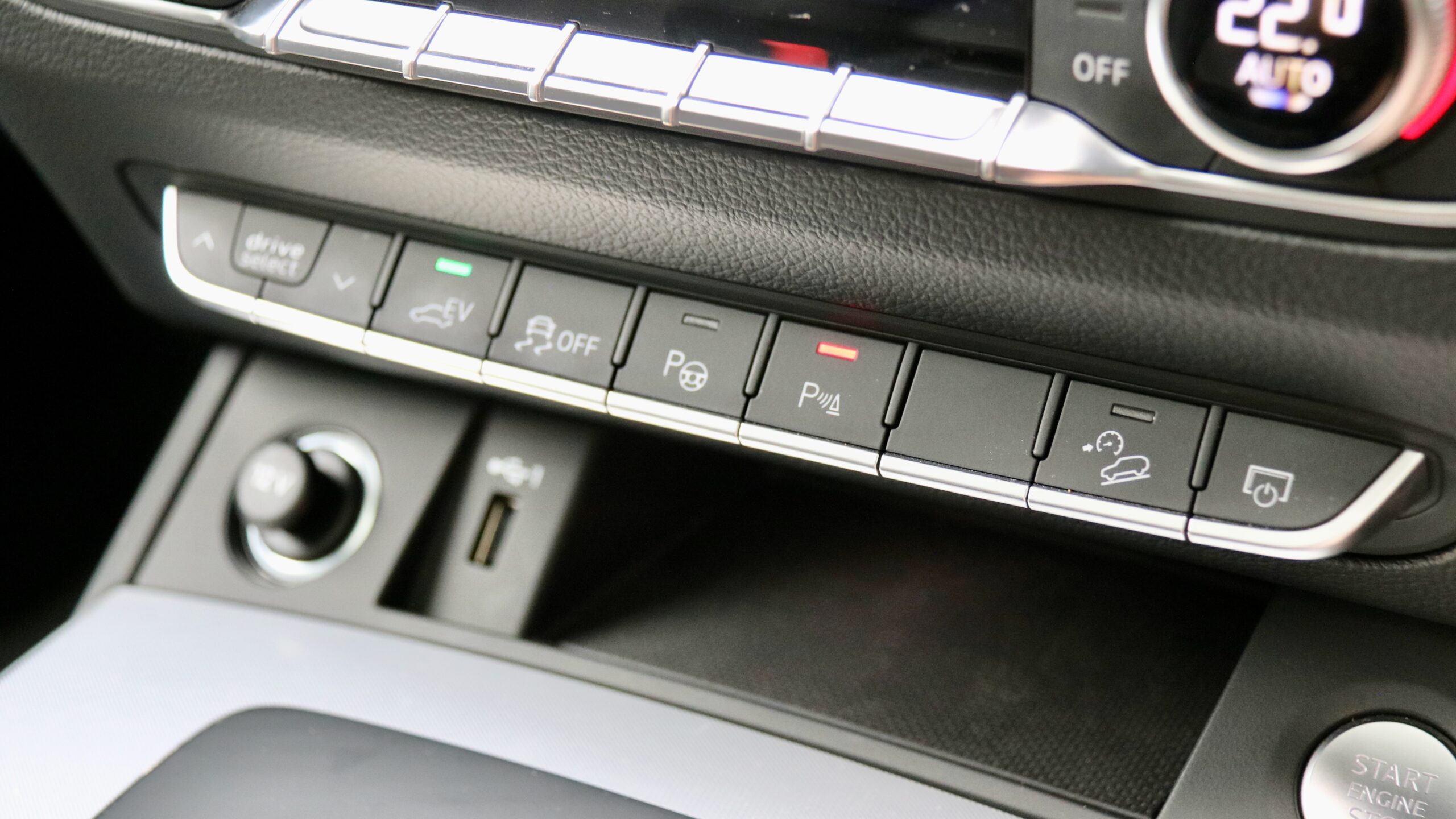
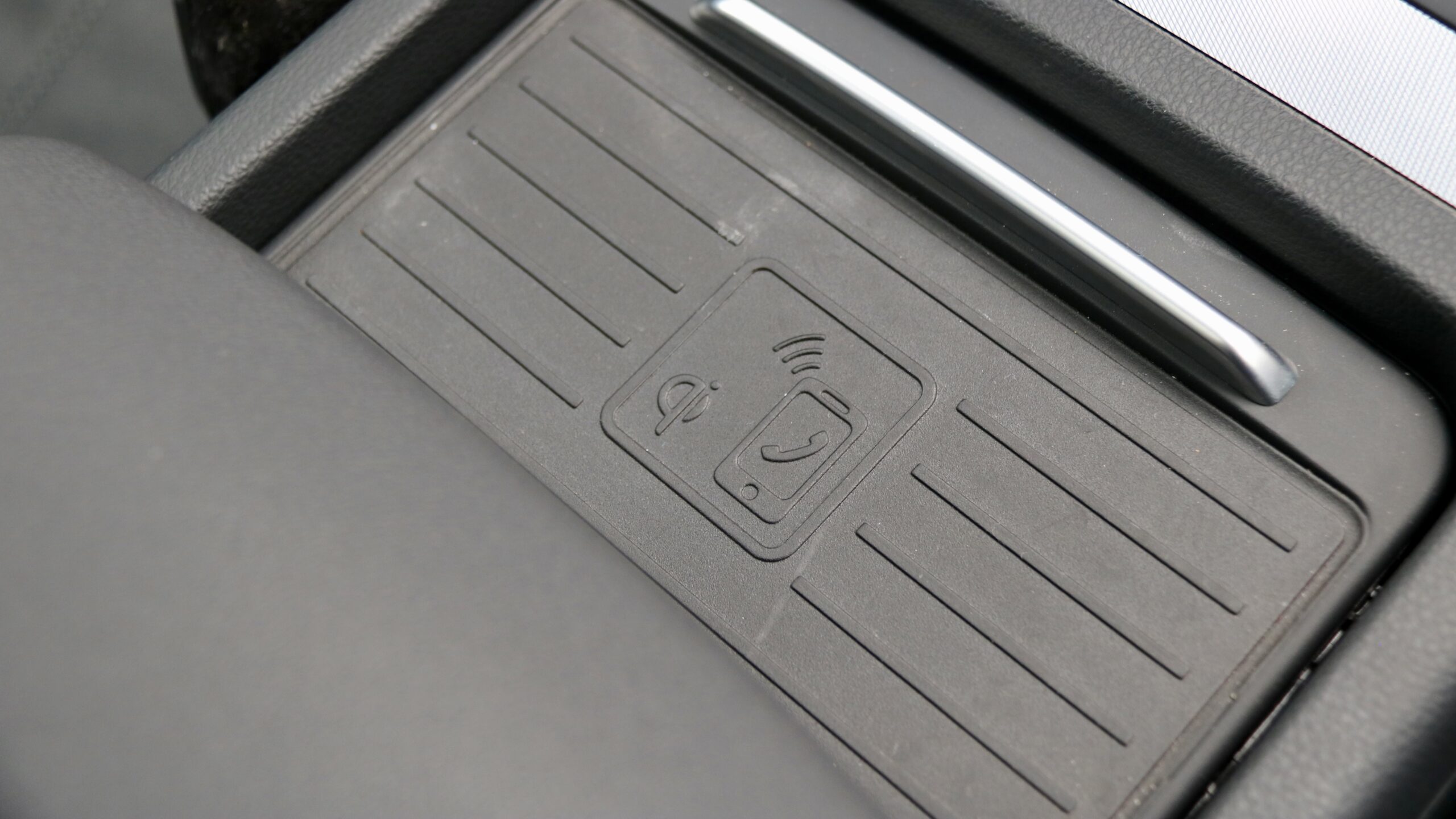
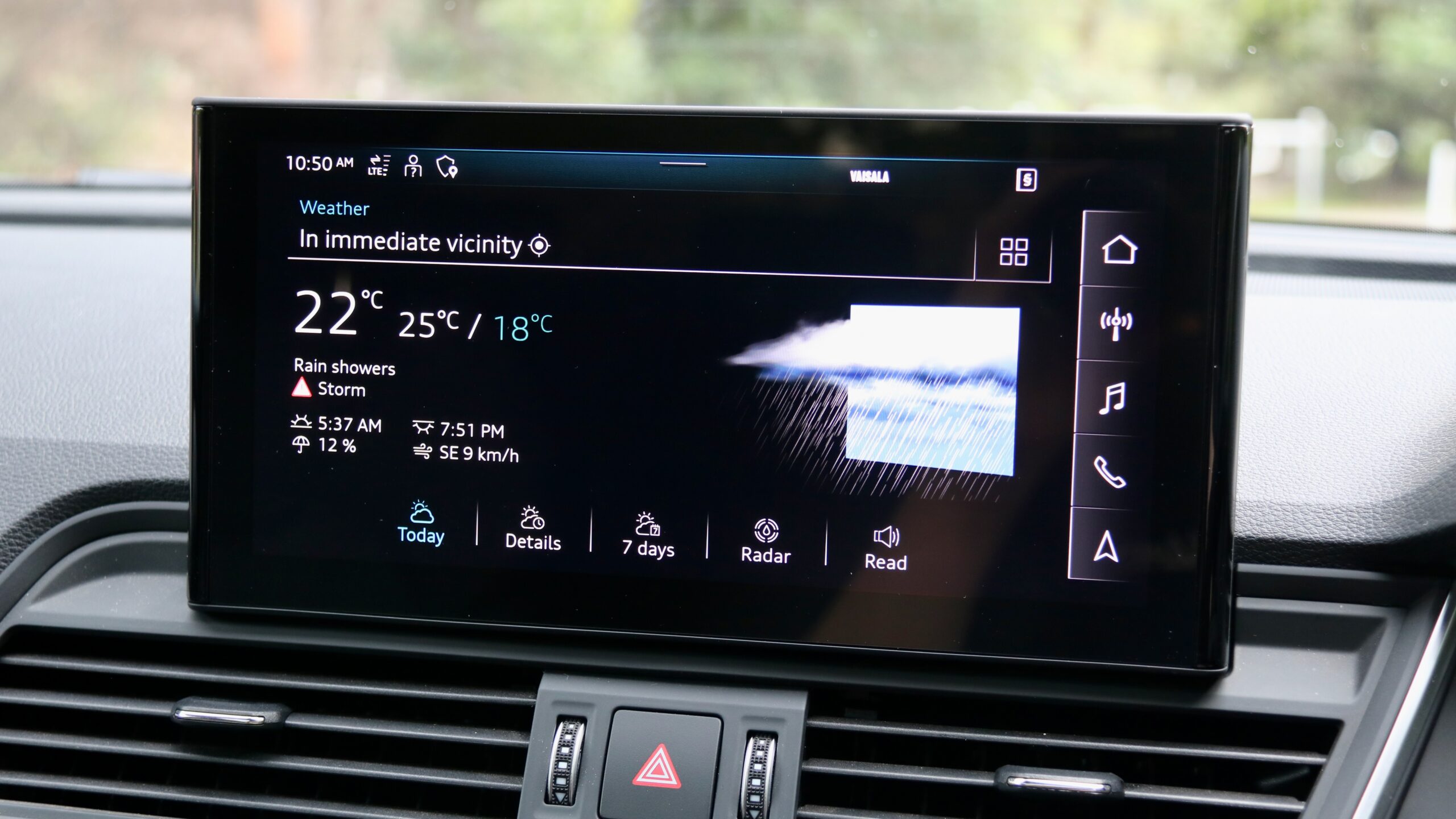
Speaking of the screen, in the centre of the Q5’s cabin is a 10.1-inch touchscreen that features Audi’s ‘MMI’ infotainment software. It’s quite easy to use with simple menus, while the screen quality is excellent and it’s quite quick to react to touch as well. It features a lot, including wireless smartphone mirroring, digital radio, satellite navigation that uses Google’s maps and even online services for features like live traffic reporting and even weather information (including a rain radar). The standard 10-speaker sound system also impressed us, though Volvo’s Bowers & Wilkins unit is one of the best in the industry.
The rear seat of the Q5 is one of the best in the segment as well, largely thanks to its space and level of functionality. Legroom is reasonable for six-footers, while headroom is excellent despite the standard panoramic sunroof. The seats themselves can also slide and recline in a 60:40 split and feature a centre armrest with cupholders, while there’s also a separate climate zone, air vents, two USB-A charging ports, a 12-volt power outlet, map pockets and reasonable door bins – only missing are heated seats and sunshades in the rear doors.
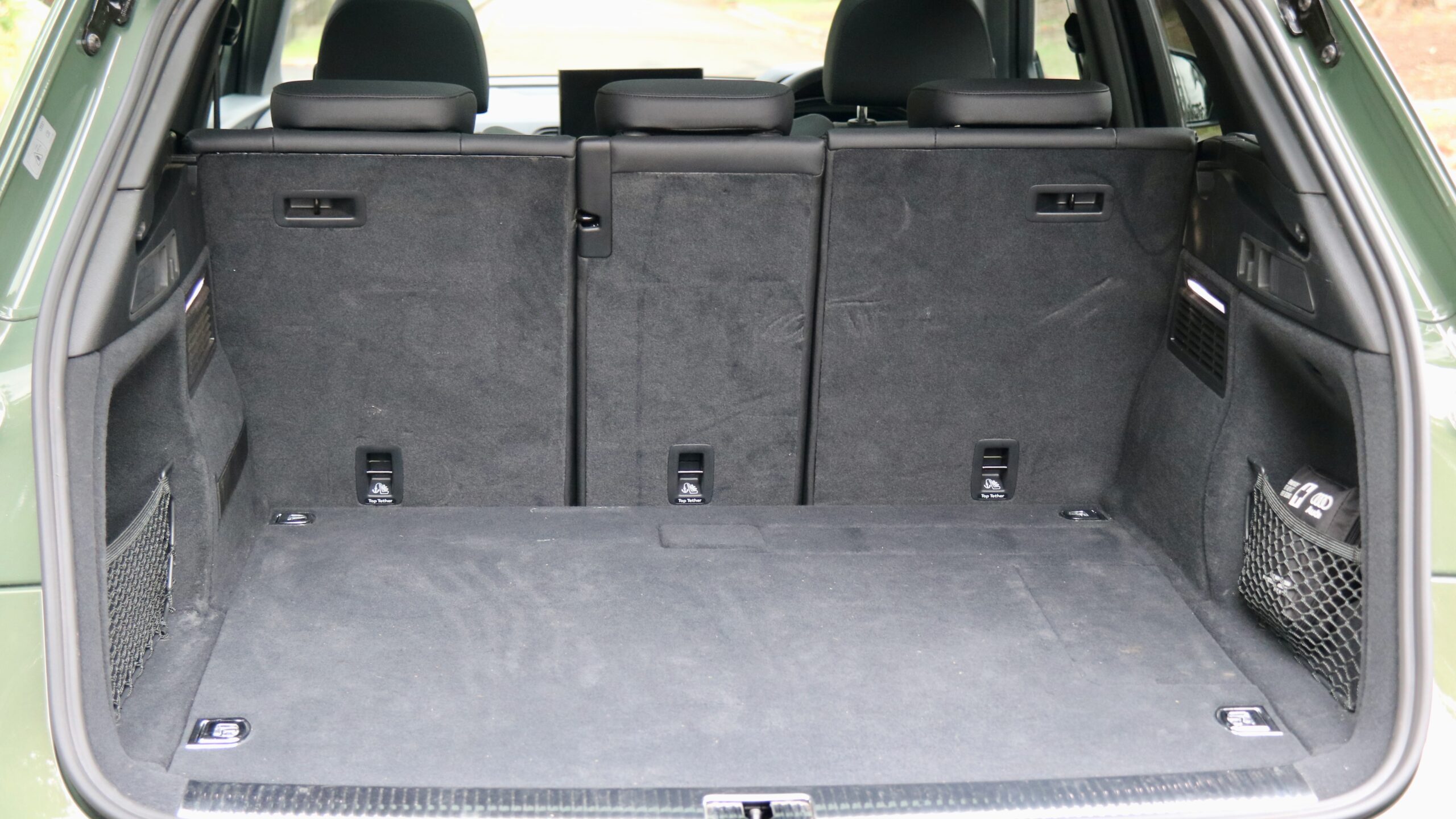
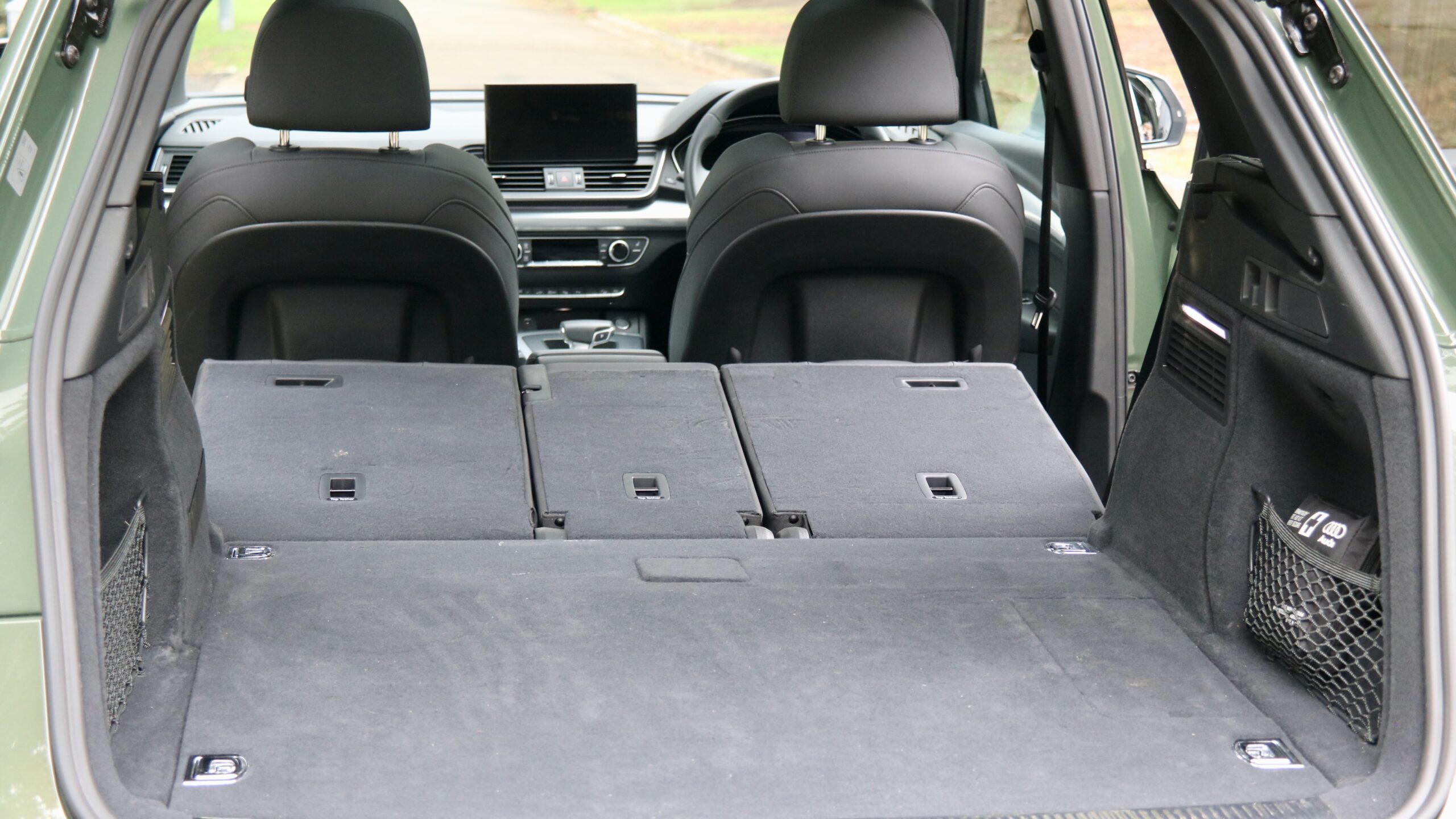
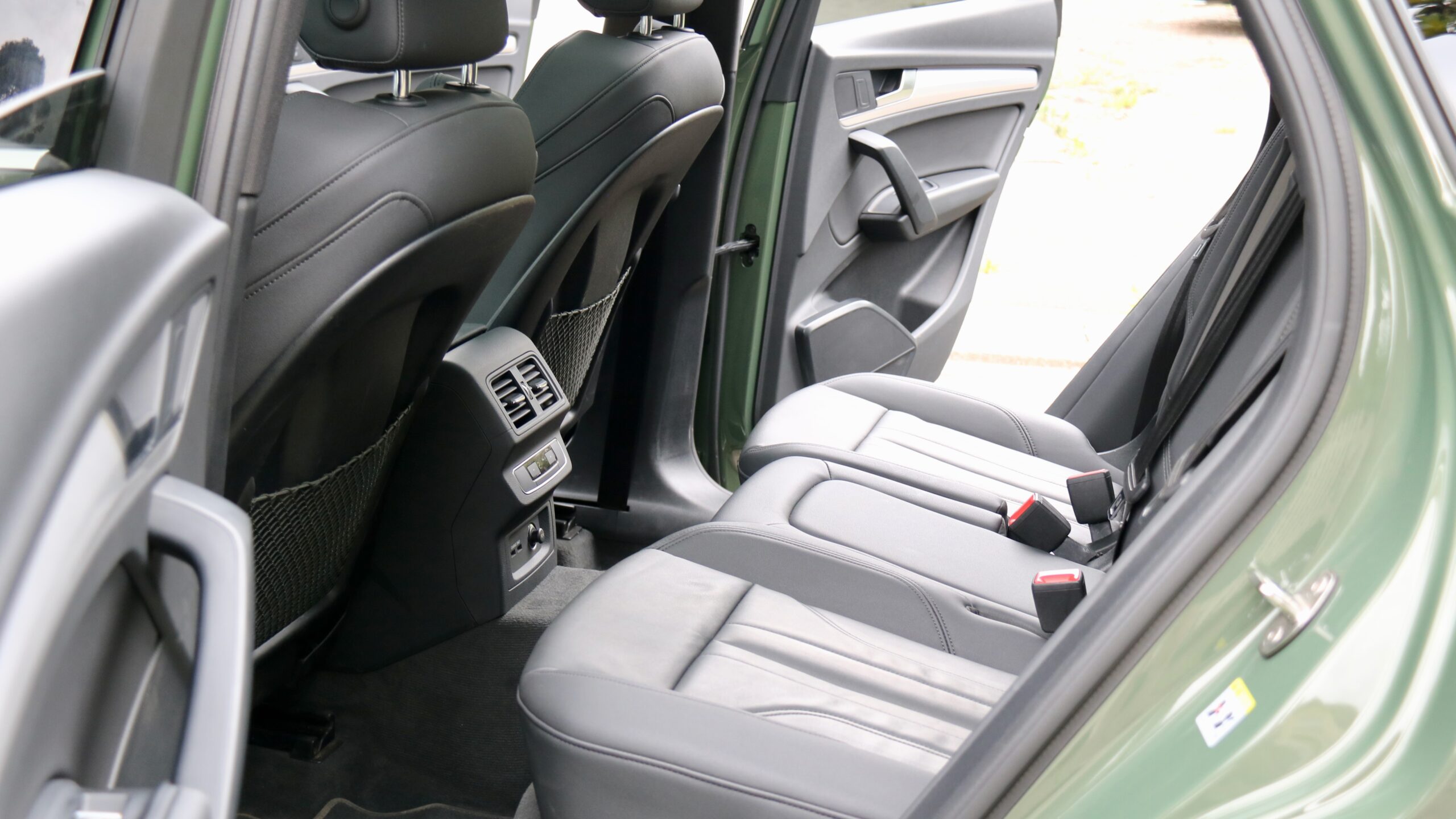
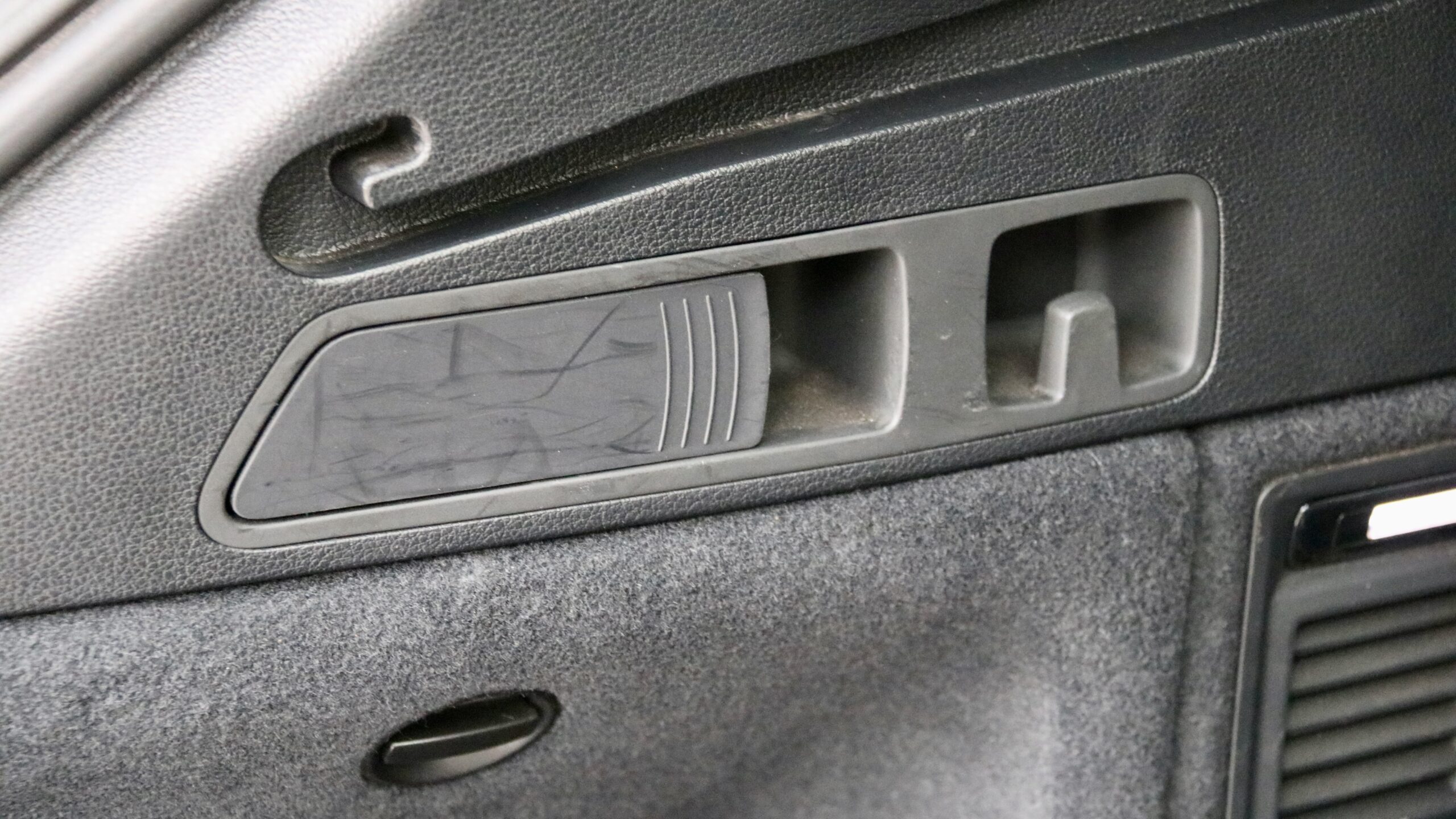
The boot of the Q5 55 TFSI e measures 460-litres, which is 60L less than a regular Q5 – only 8L less than the XC60 – thanks to the battery located underneath the boot floor. Folding the seats down increases that to 1,400L, which is 120L less than the regular Q5. As for boot features, there are tie down points, a net to hold luggage down, two bags for your various charging cables, cool LED lighting, hooks for bags and tabs to fold the rear seats down. Unlike the regular Q5, the 55 TFSI e does not feature a spare wheel.
Service & Warranty: 8.5/10
As with its other new cars, Audi Australia covers the Q5 55 TFSI e with a five-year/unlimited km warranty with five years of roadside assistance, while the battery is covered by an industry-standard eight-year/160,000km warranty. The Q5’s service intervals are once-yearly/every 15,000km, whichever comes first. Audi doesn’t quote service pricing, but a five-year/75,000km service pack for all Q5 variants costs $3,520 ($704 annually).
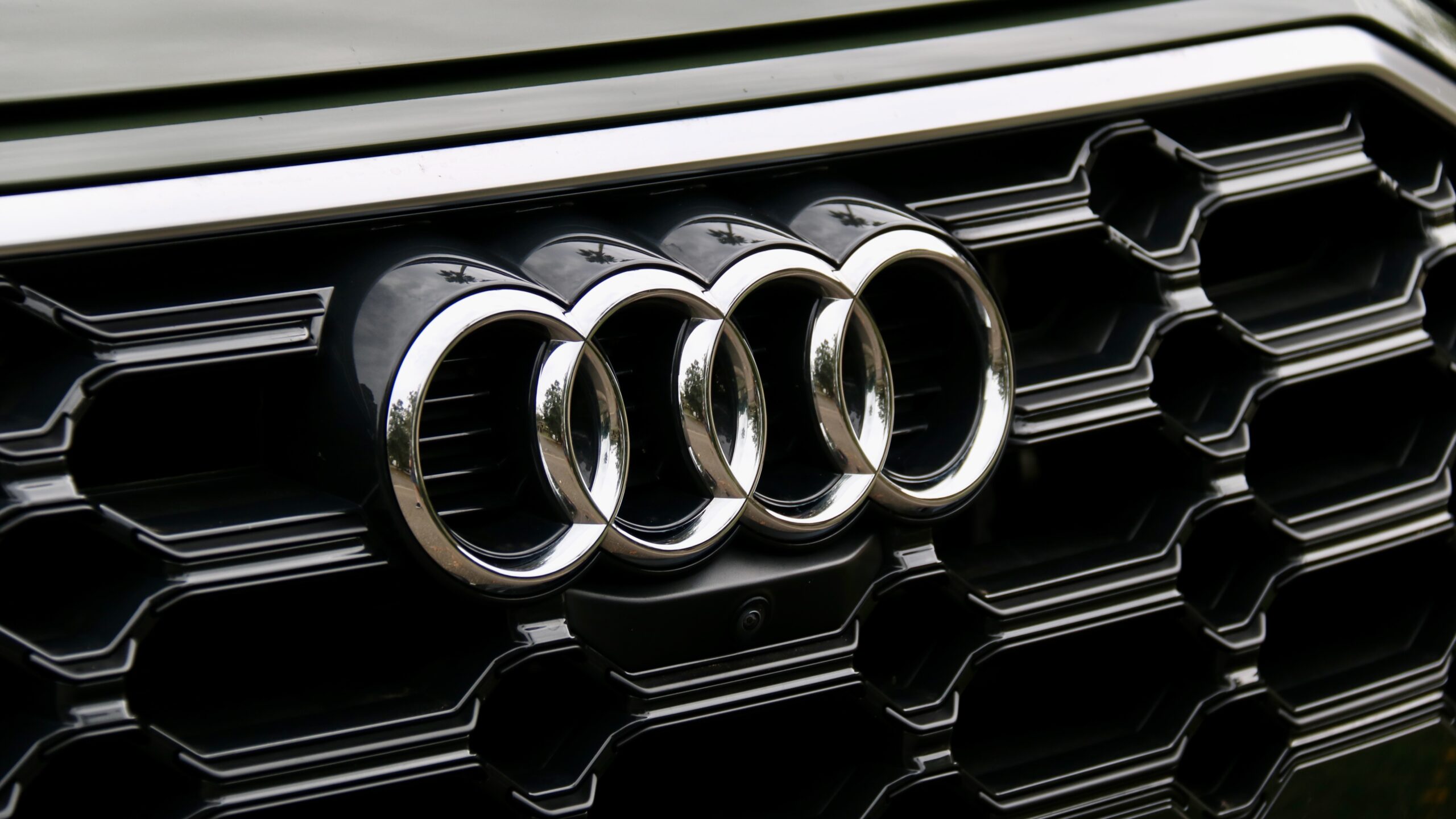
Volvo covers its new cars with the same five-year/unlimited km warranty and eight-year/160,000km battery warranty, though it gives a total of eight years of roadside assistance. Volvo also doesn’t quote service pricing, but a five-year/75,000km service pack – the service intervals are the same as the Qudi – costs less than the Q5 at $3,000 ($600 per service).
The 2023 Audi Q5 55 TFSI e DiscoverAuto Rating: 8.3/10
Overall, if you’re one of the few new car buyers considering a plug-in hybrid in the premium mid-size SUV segment, the 2023 Audi Q5 55 TFSI e should definitely be on your research list. As far as plug-in hybrids are concerned, the Q5 PHEV adds a very punchy and refined drivetrain with good all-electric credentials, reasonable charging times and a pretty good ride and handling balance. And best of all, those are added to the regular Q5’s list of qualities: its high quality interior, pretty good practicality, a good list of standard equipment and excellent refinement.
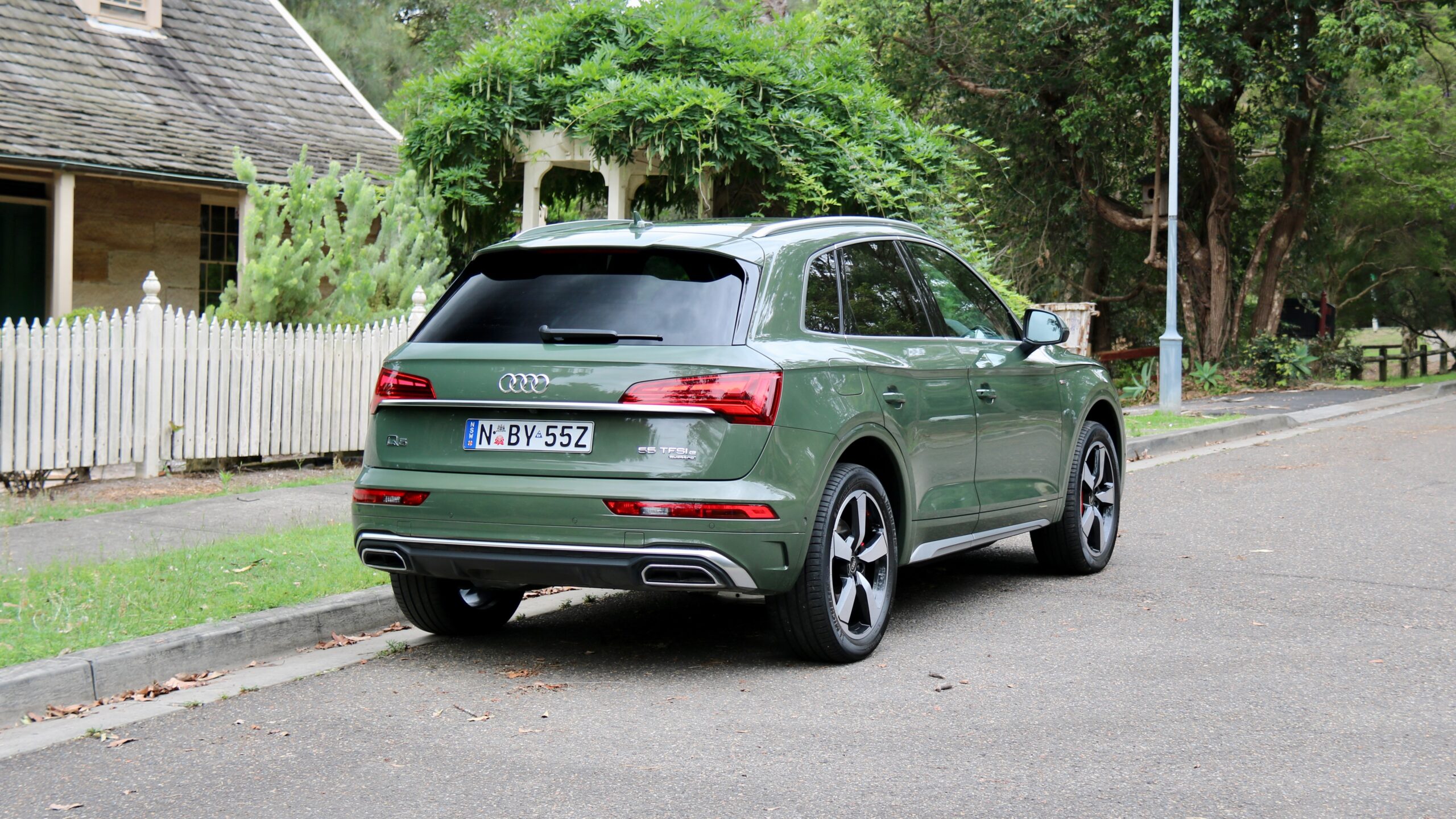
Of course, there are a few caveats to greatness: although it’s a lot quicker and adds a bit more standard equipment on top of the Q5 45 TFSI Sport on which it’s based, it costs a lot more money. The battery reduces luggage capacity, and we wish it had DC fast charge capability for greater practicality. But overall, we’ve come across quite impressed with our first look at the Audi Q5 – regardless of variant chosen, it’s a great all-rounder that’s very worth consideration in the mid-size SUV class.
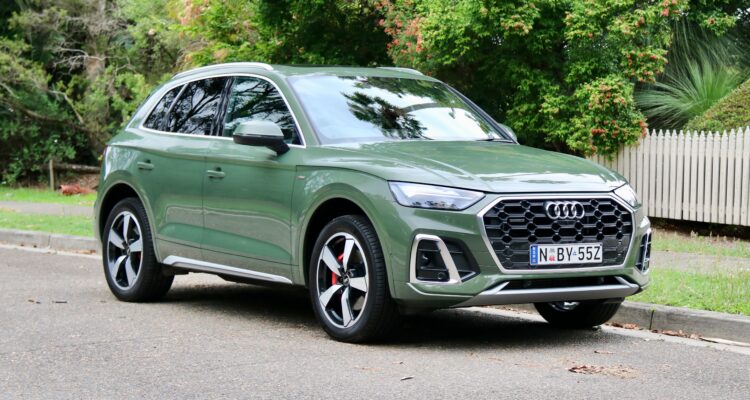
Leave a Reply